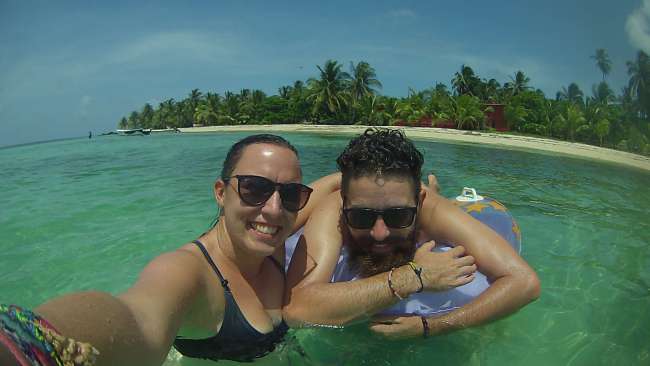
alpakaliebe
vakantio.de/alpakaliebe-tiniundtoemmiinsuedamerika
From hippie beaches, gauchos and world wonder waterfalls: Montevideo to Iguazu!
Publicado: 15.04.2017
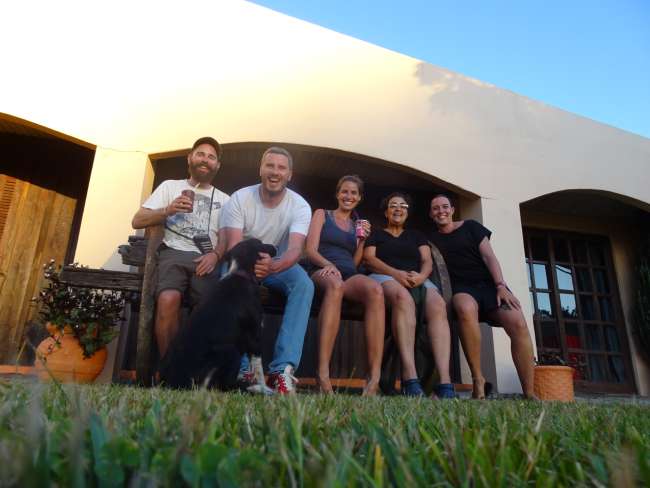
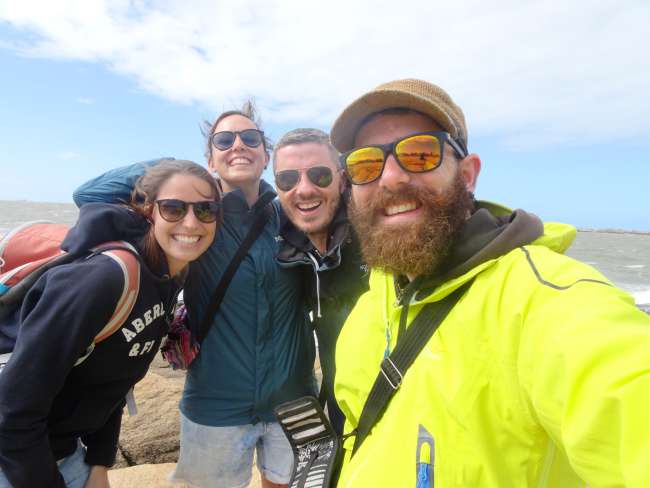
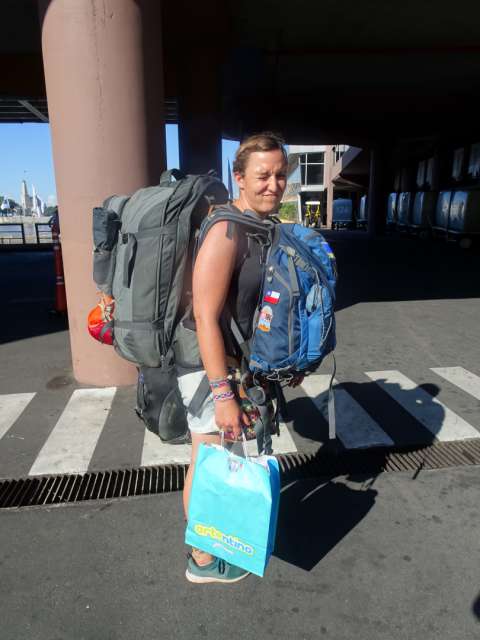
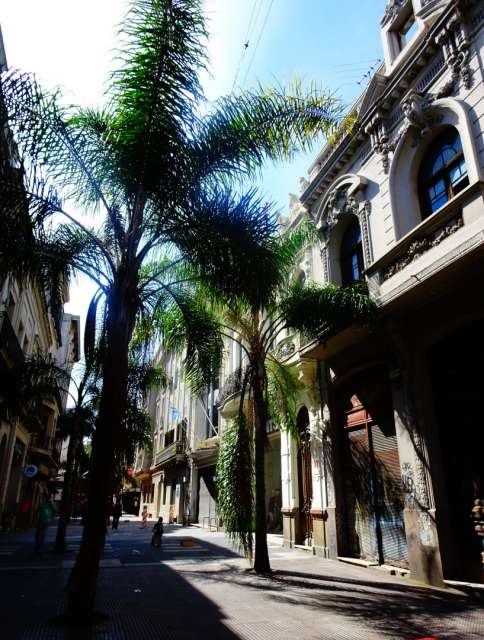
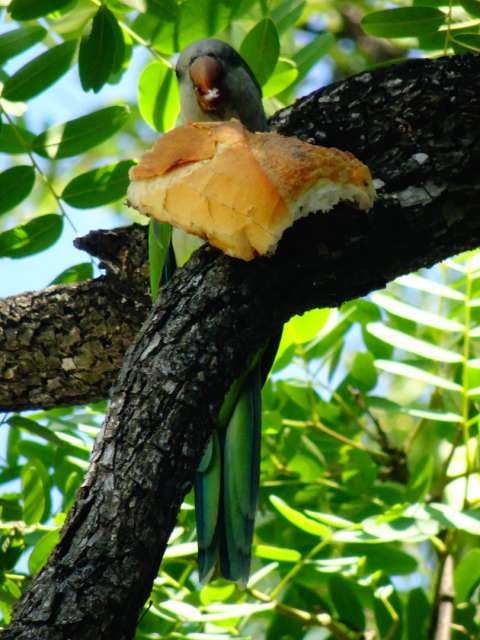
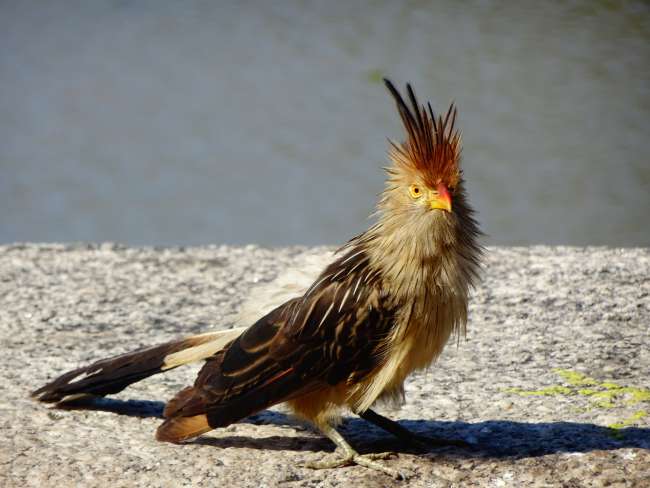
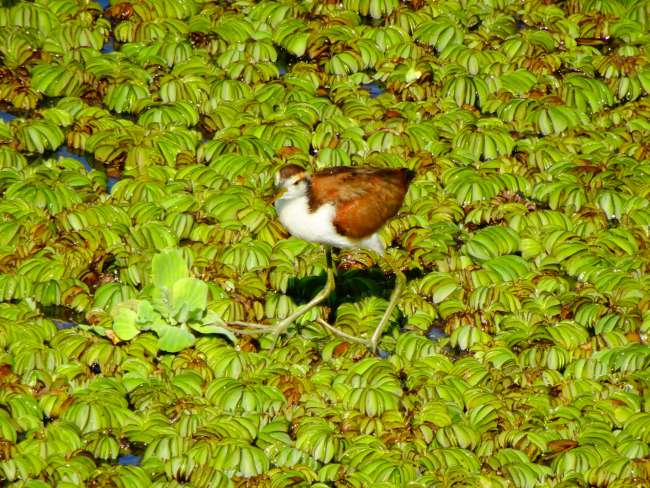
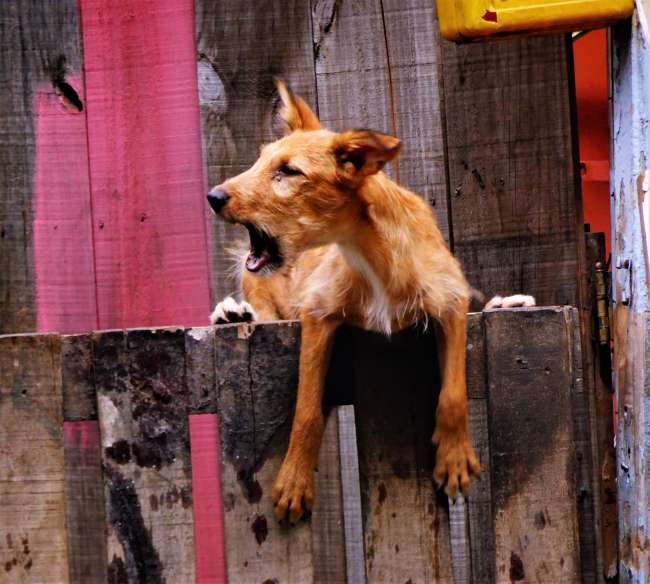
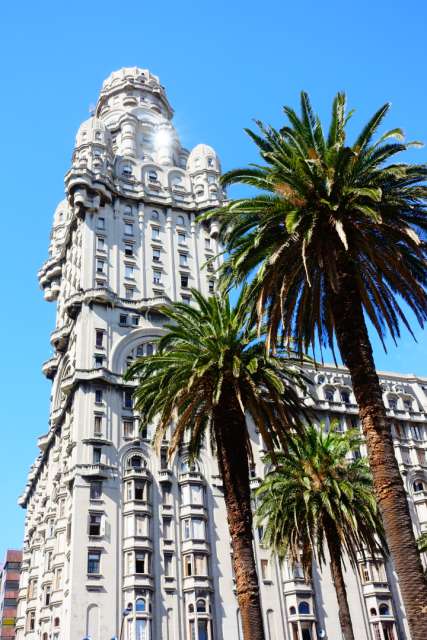
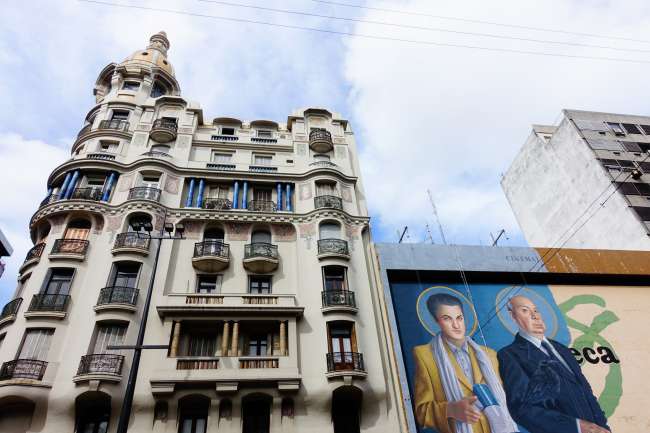
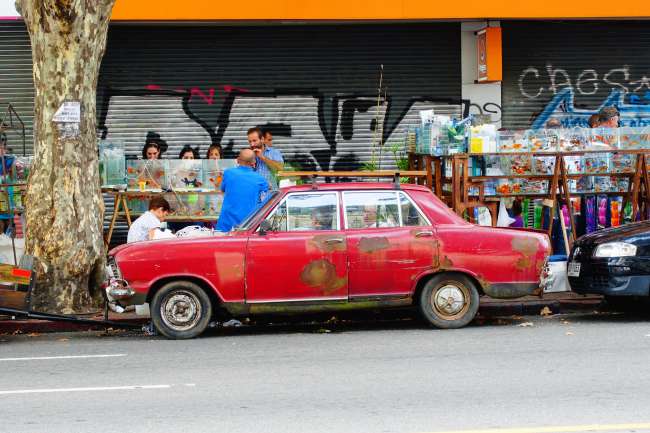
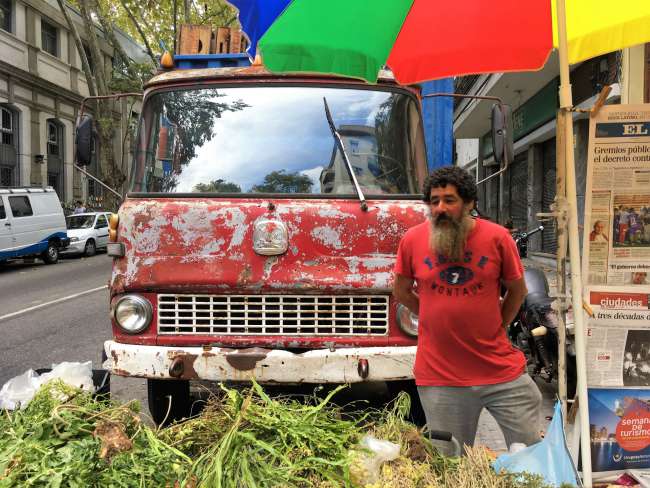
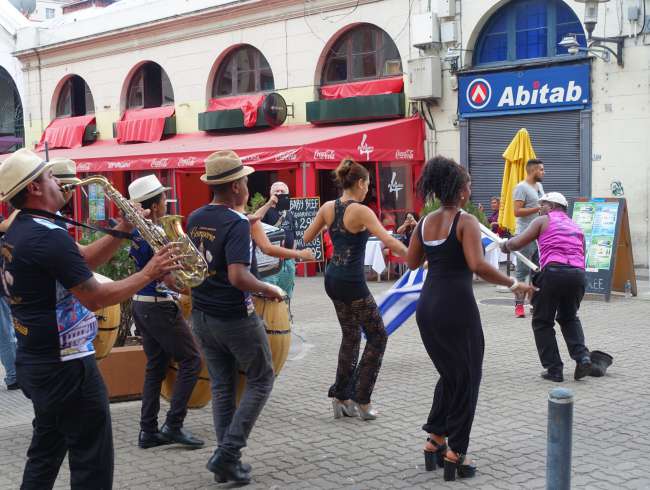
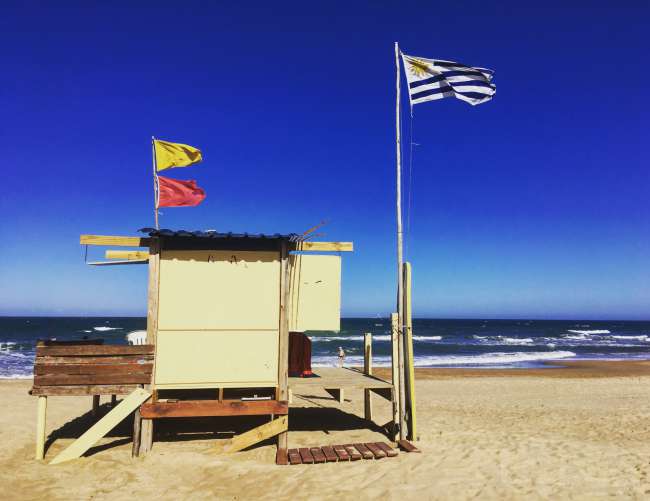
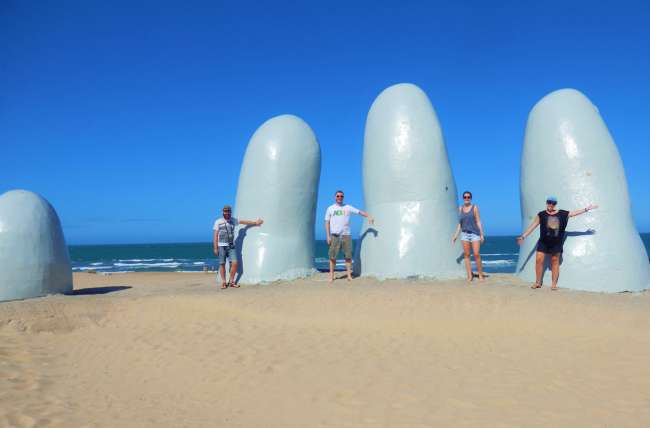
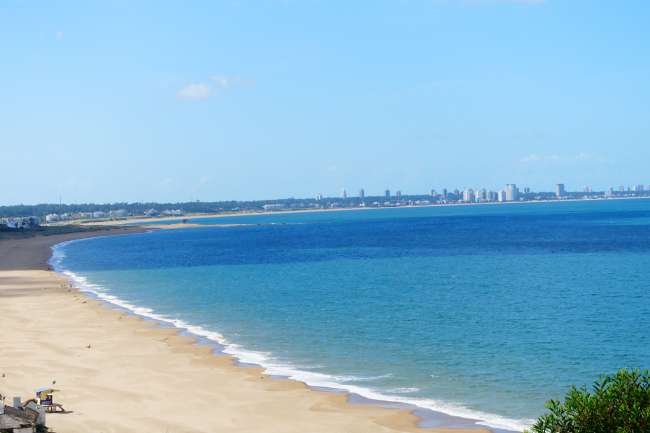
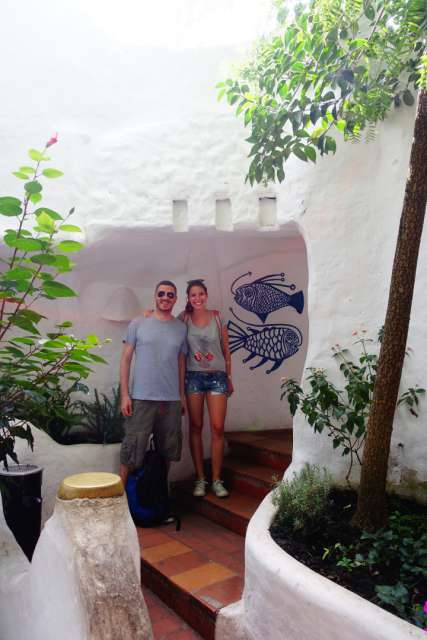
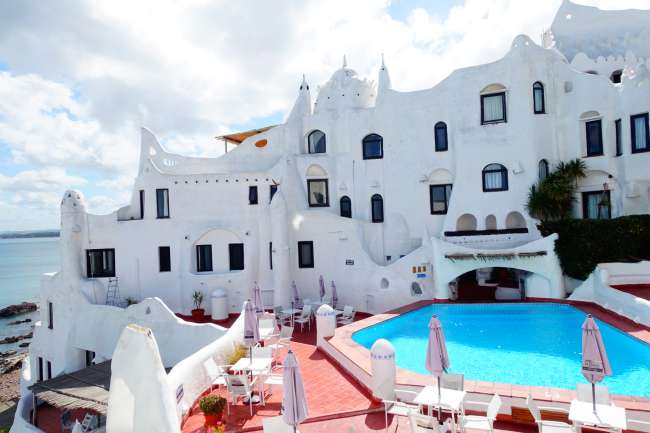
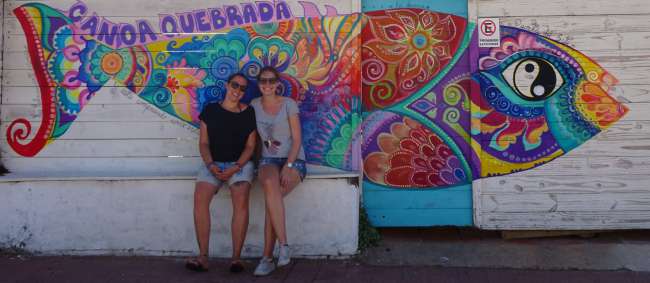
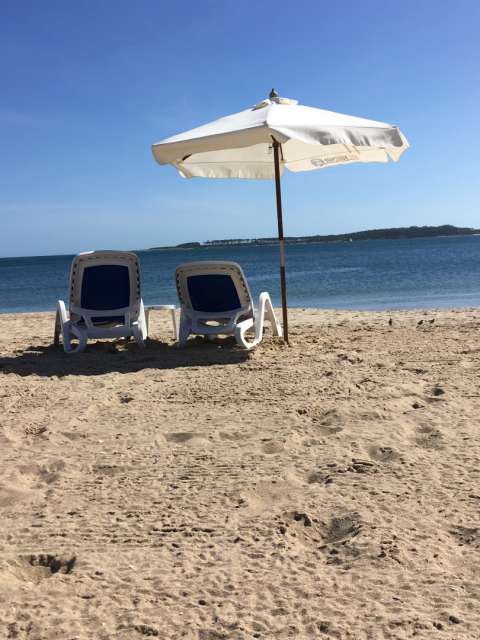
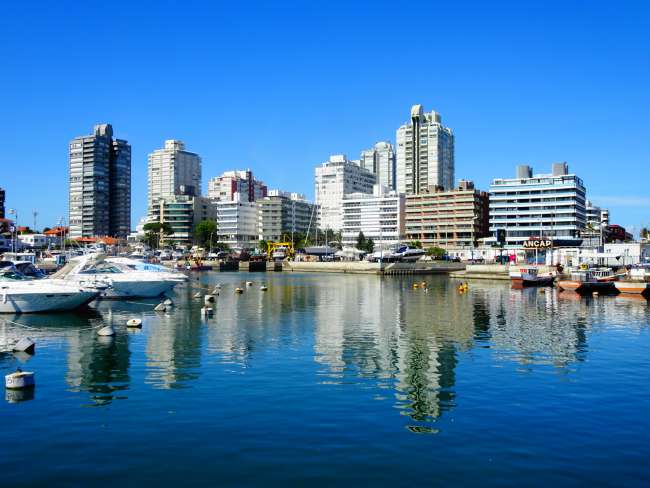
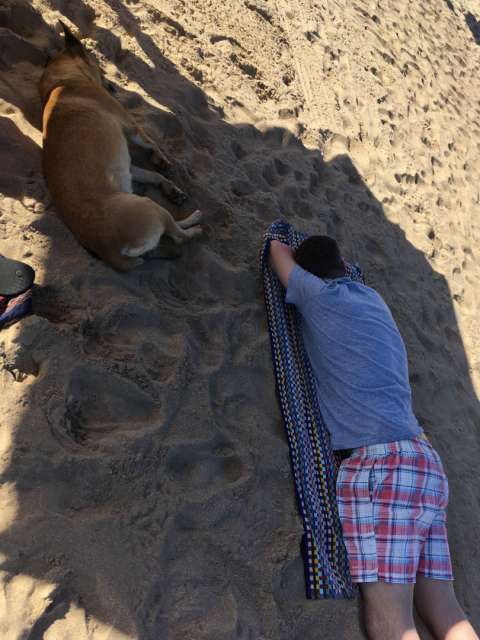
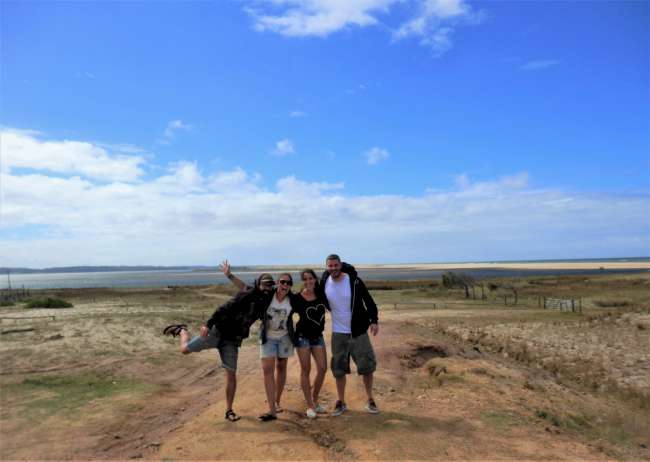
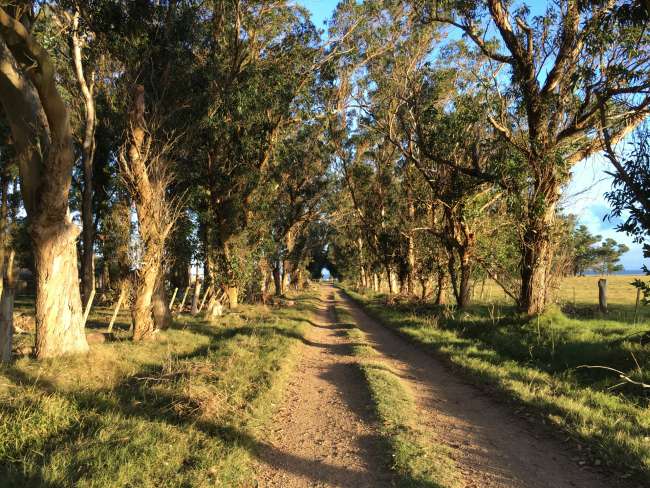
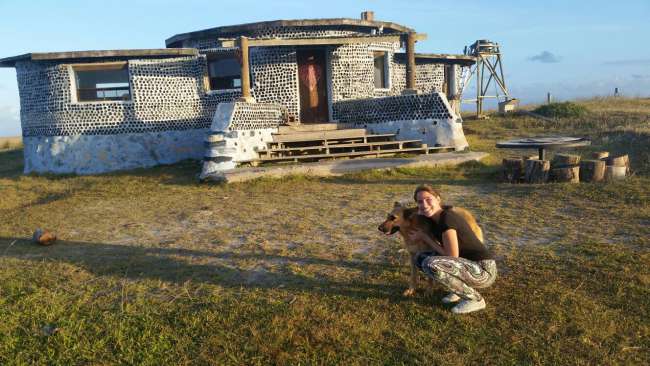
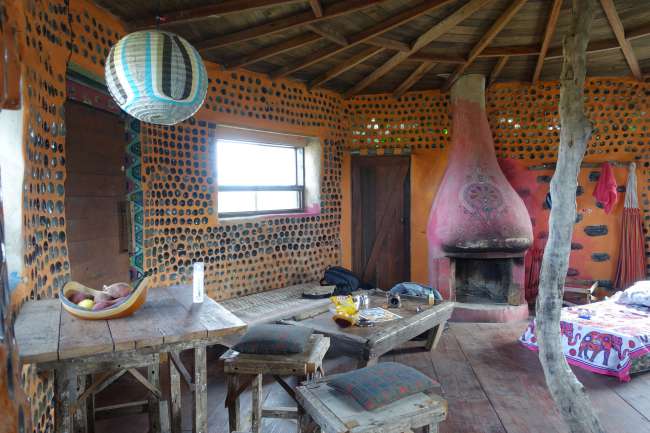
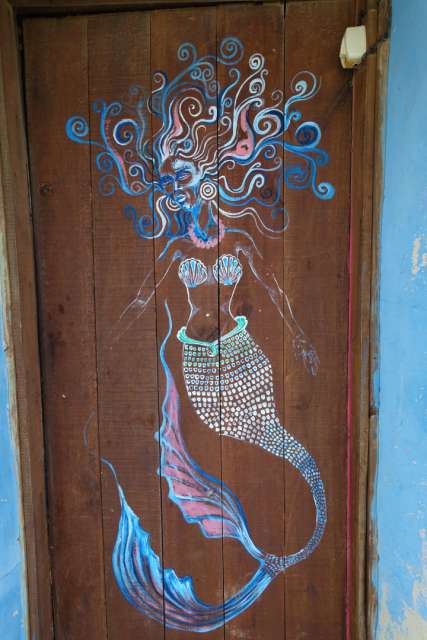
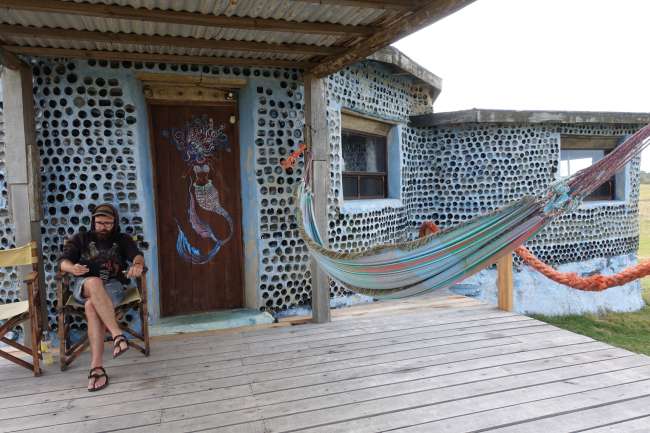
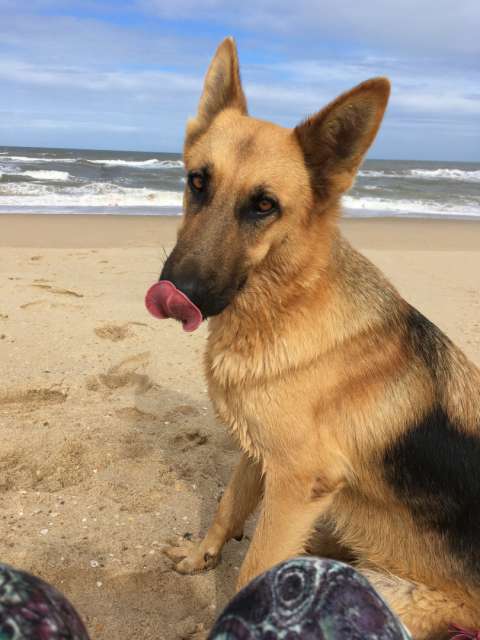
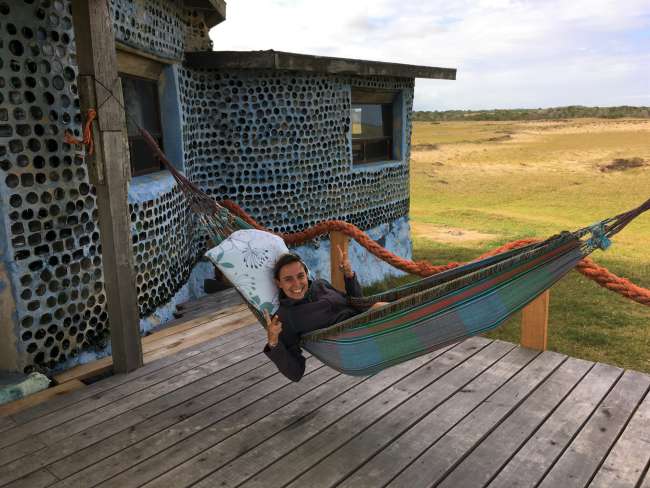
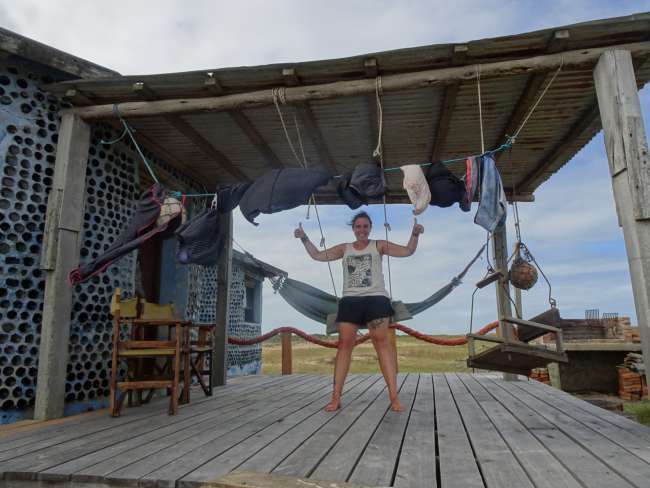
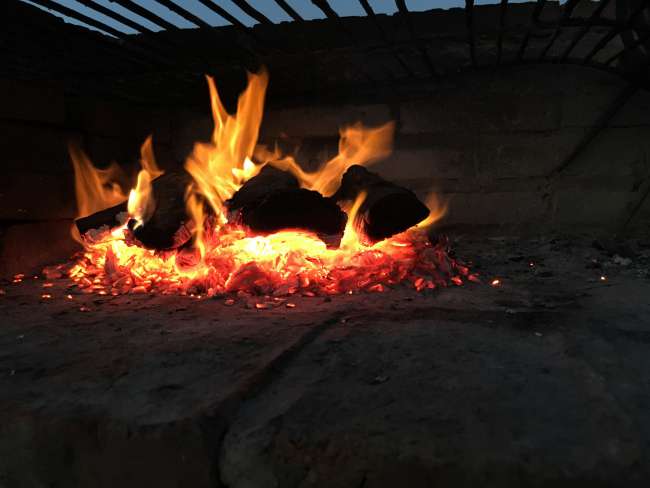
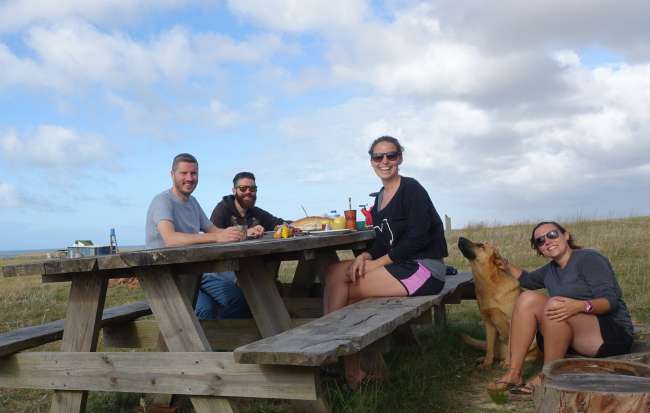
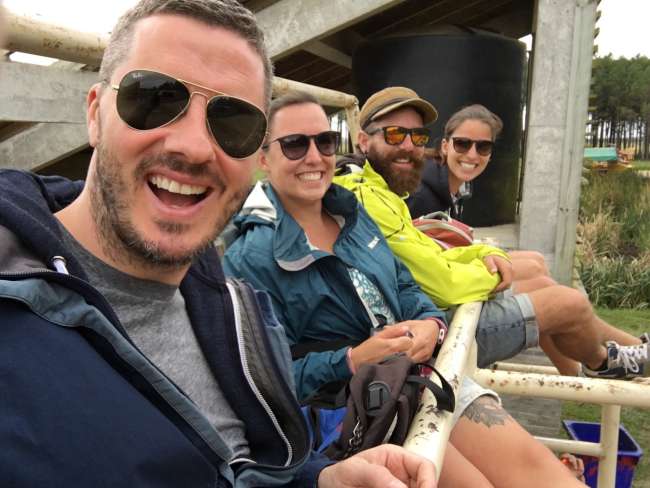
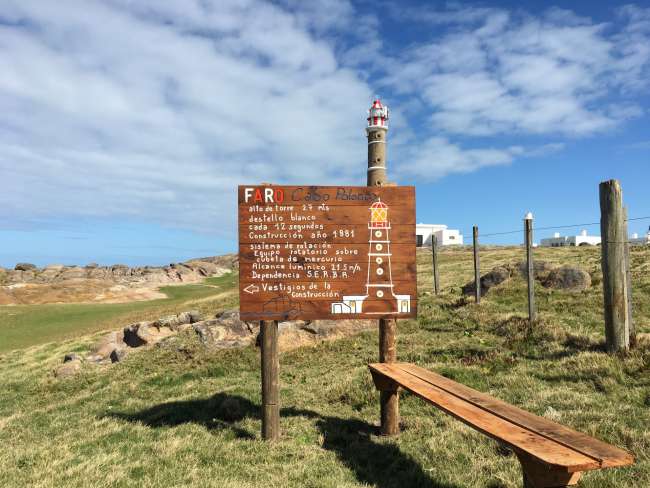
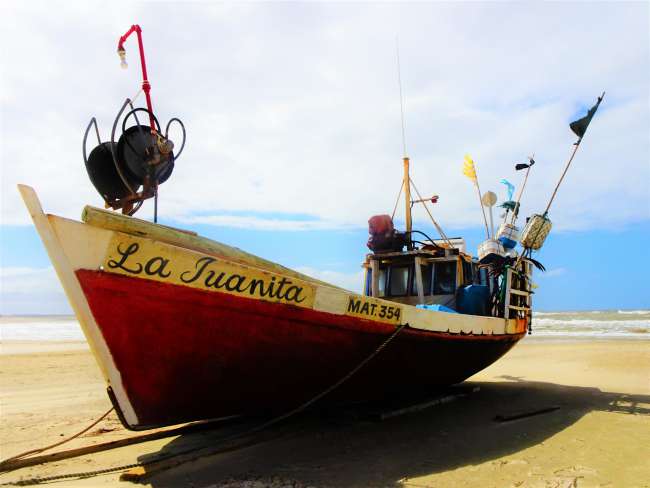
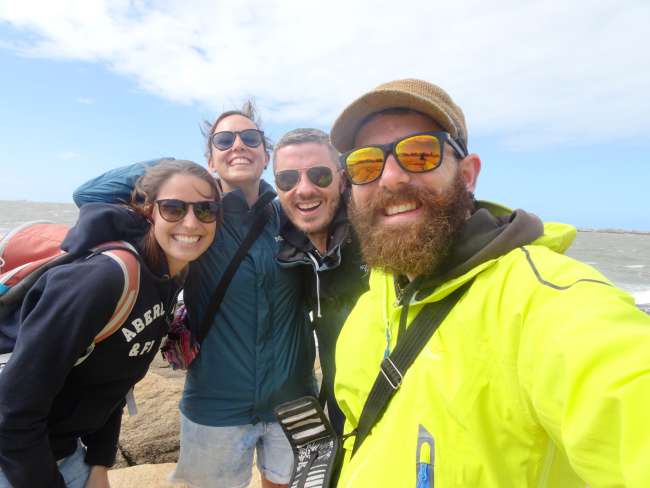
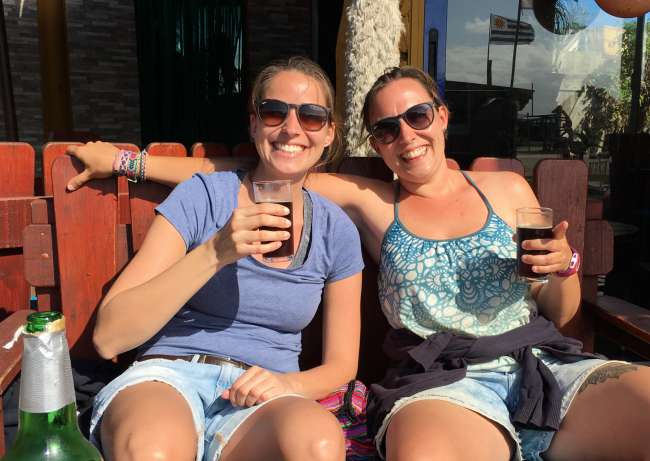
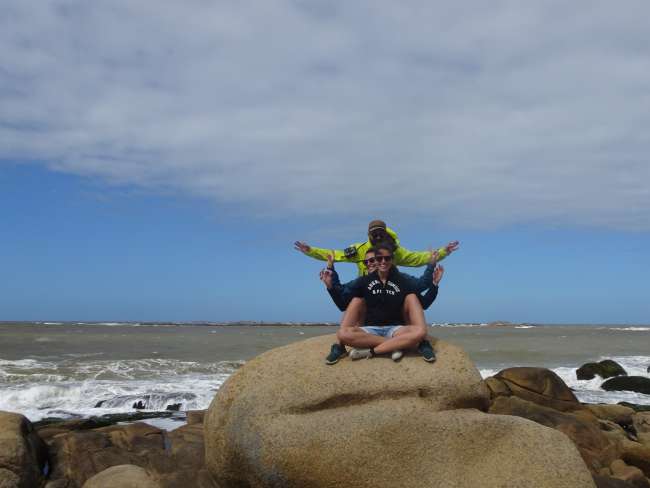
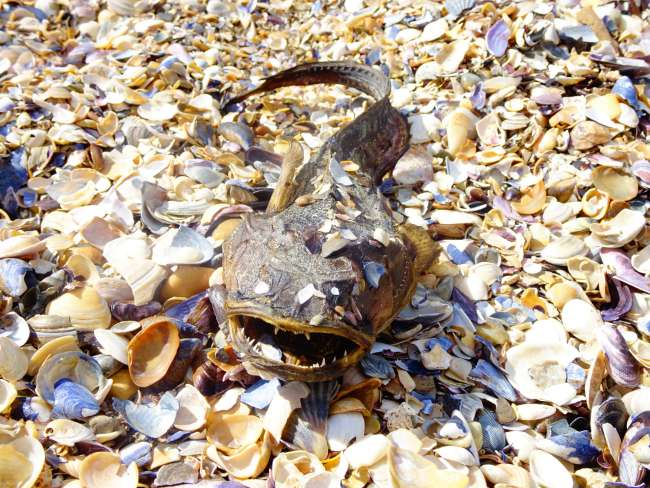
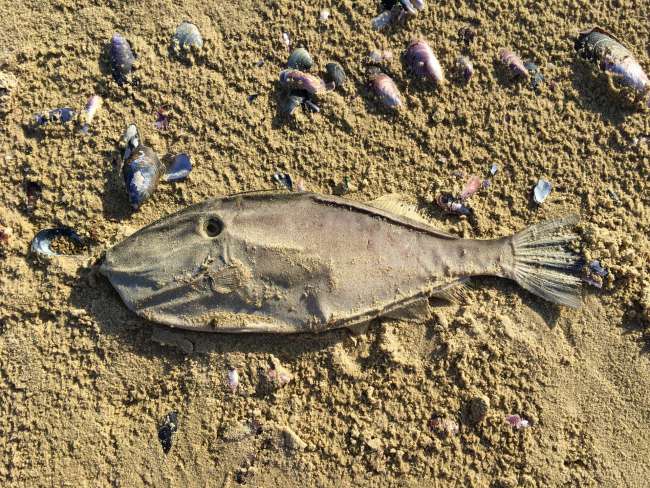
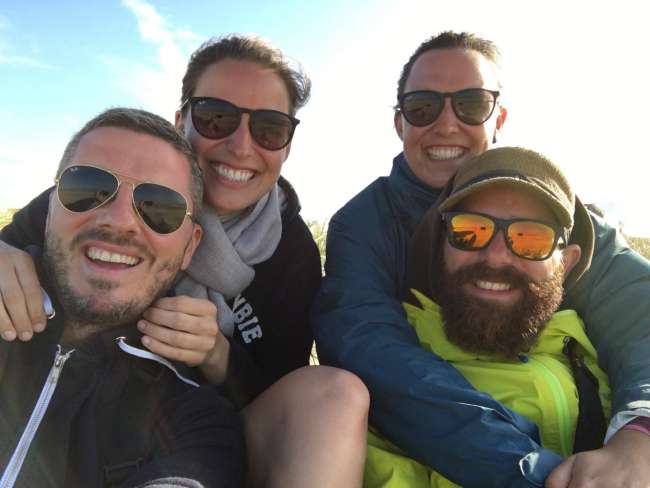
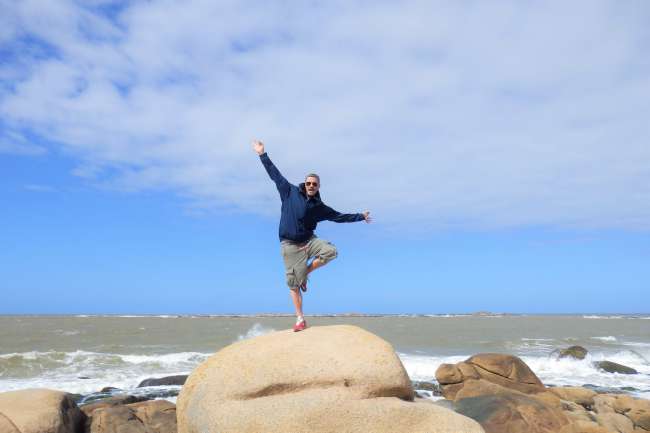
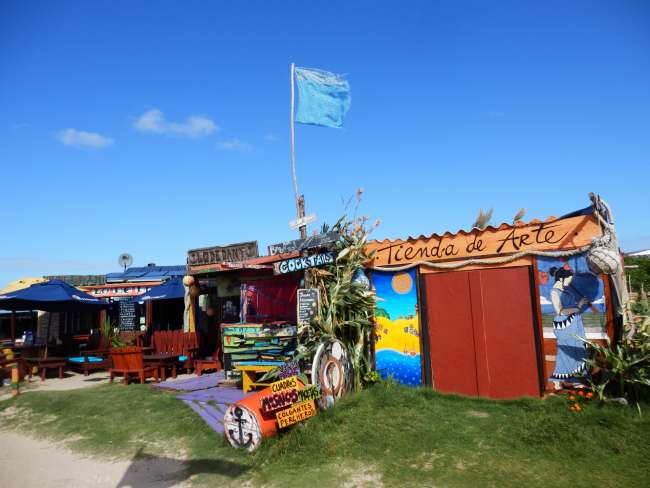
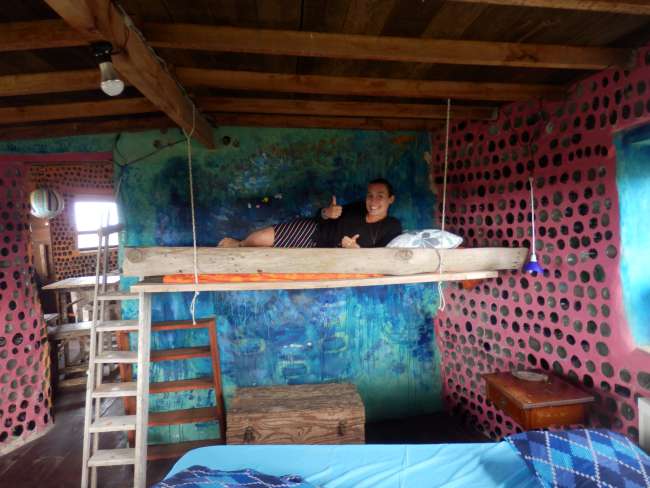
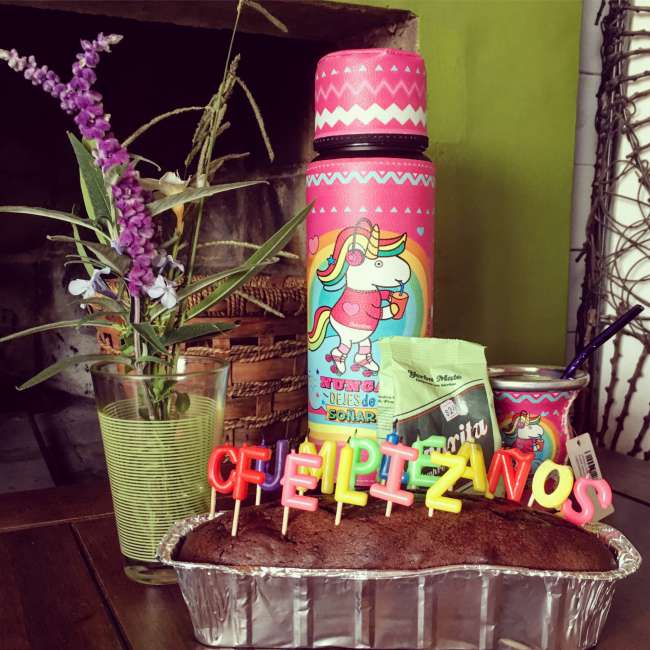
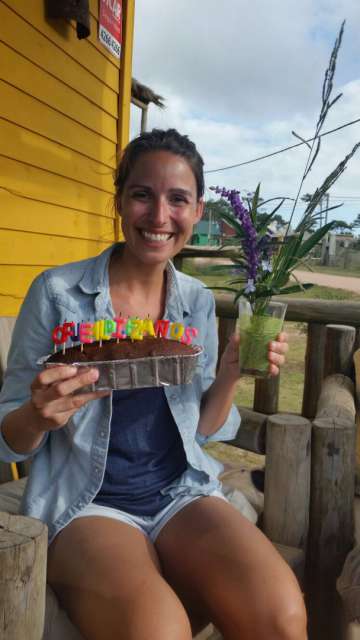

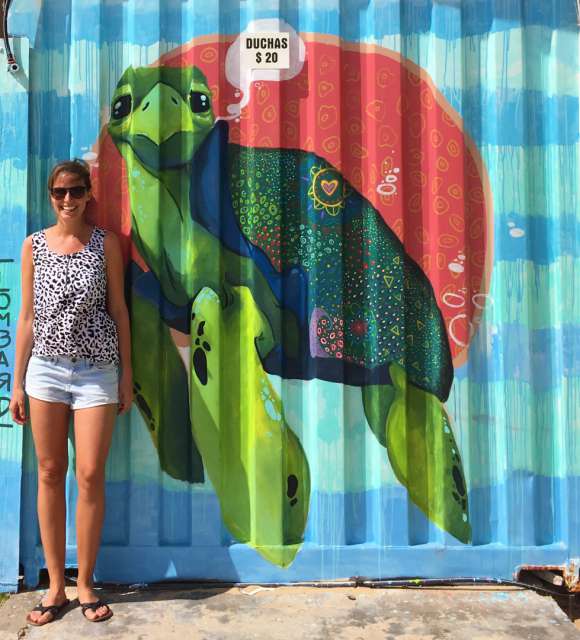
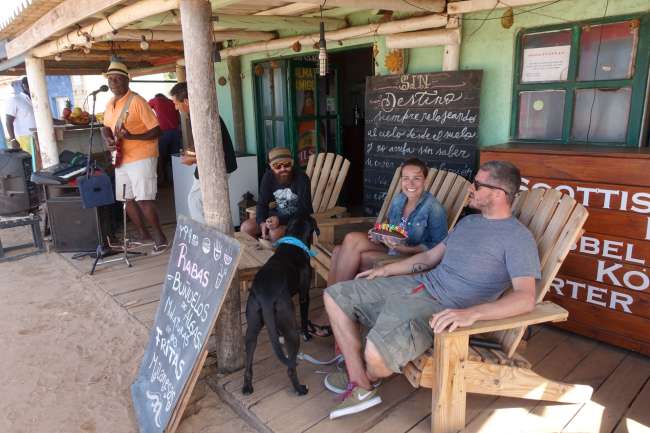
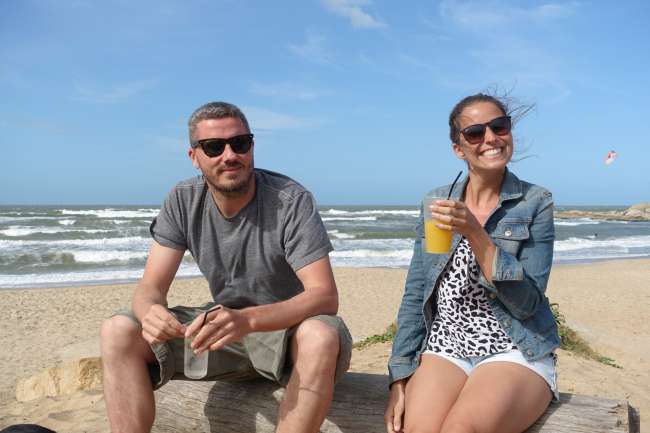
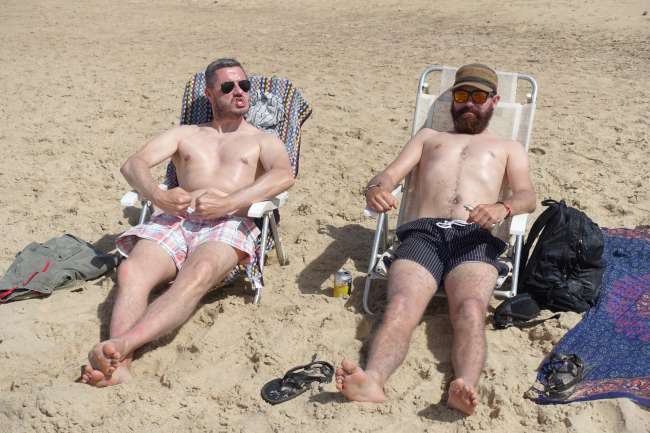
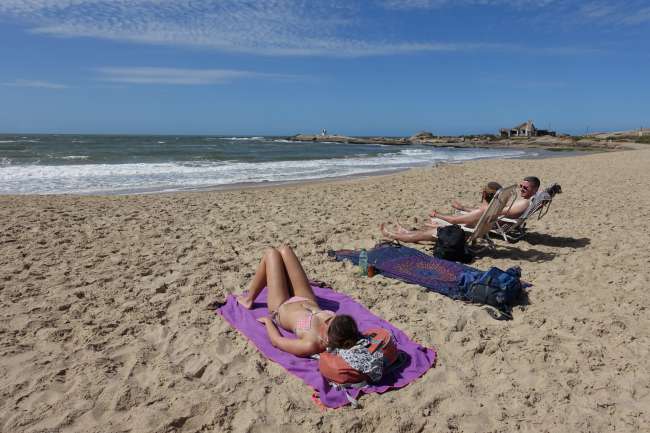
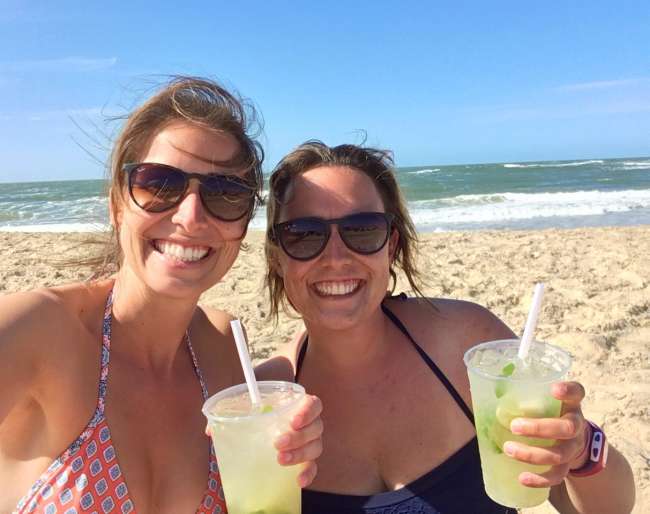
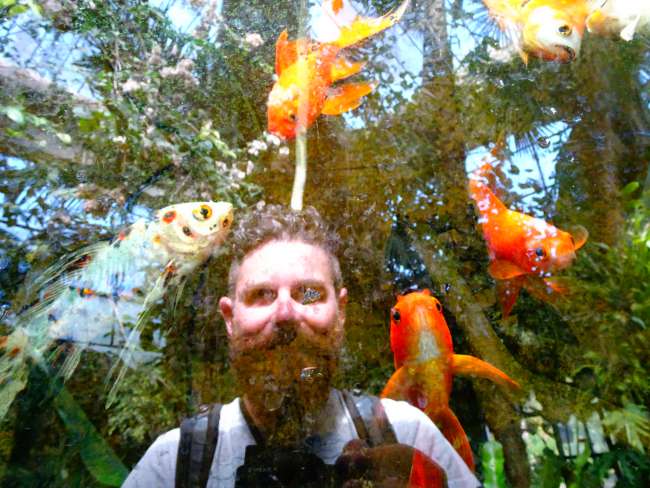
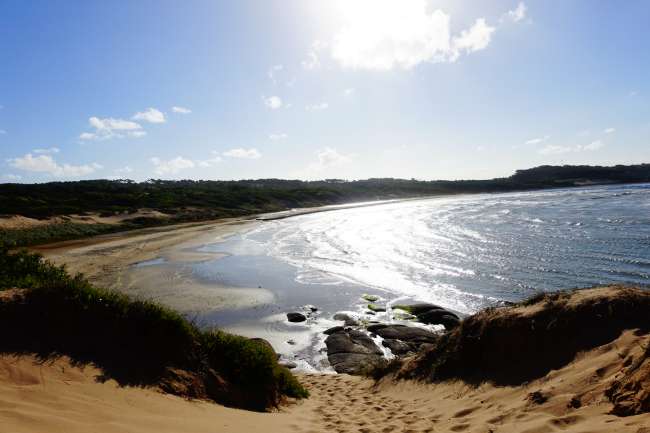
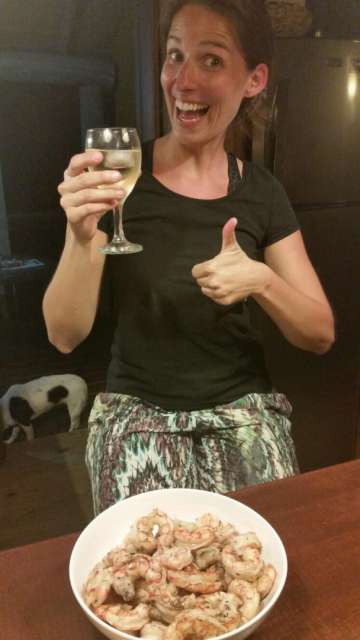
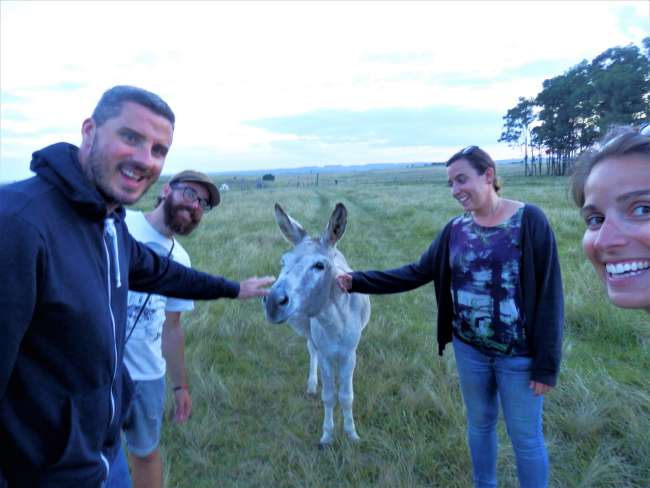
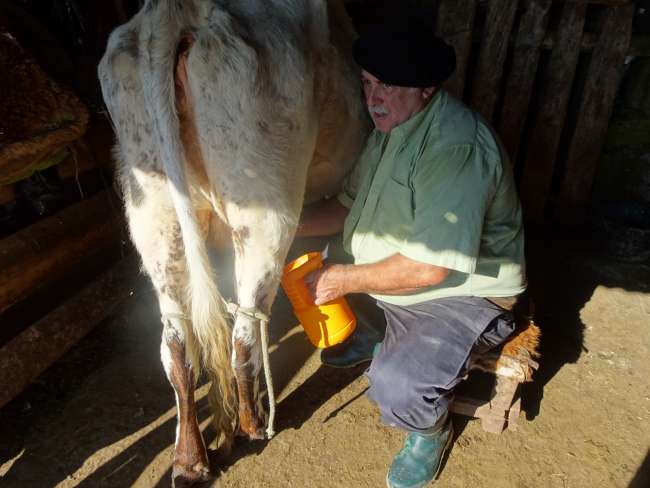
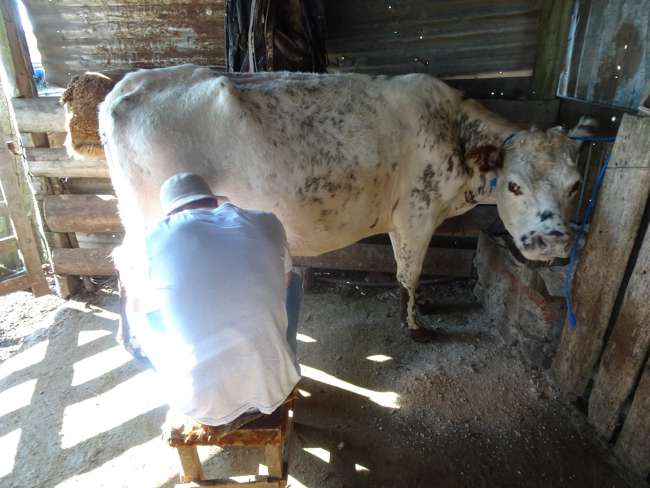
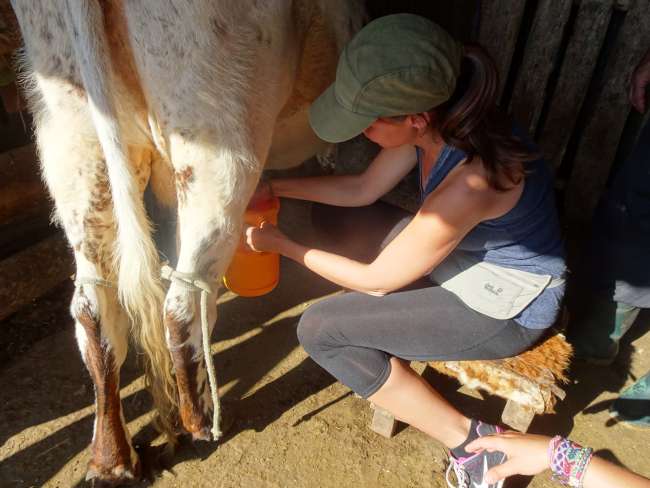
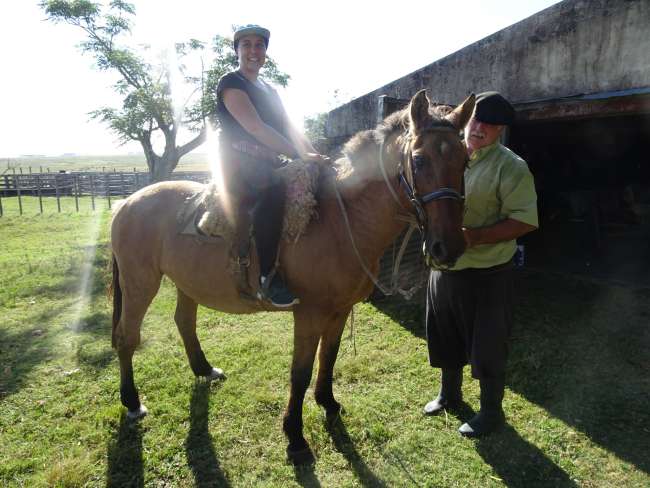
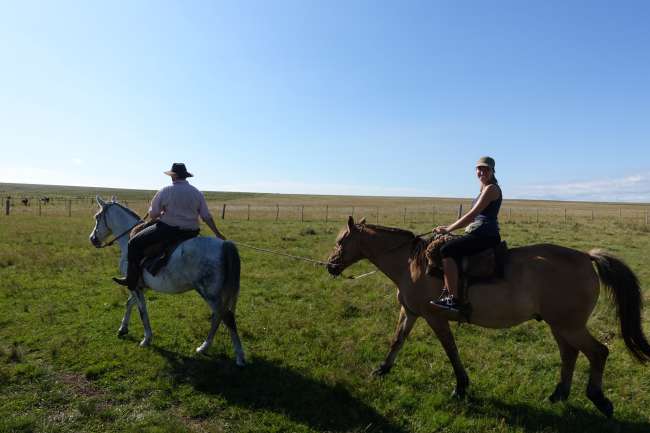
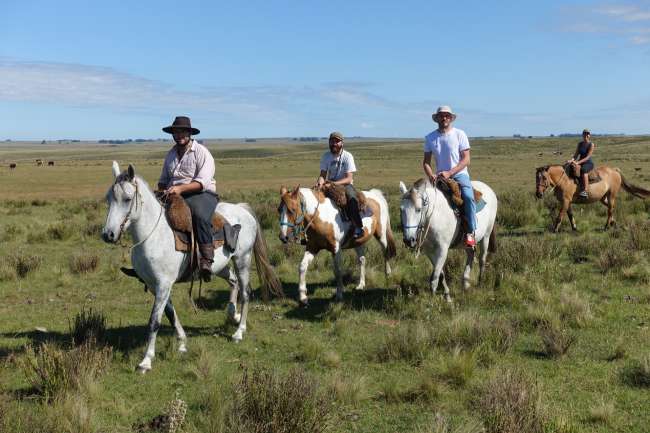
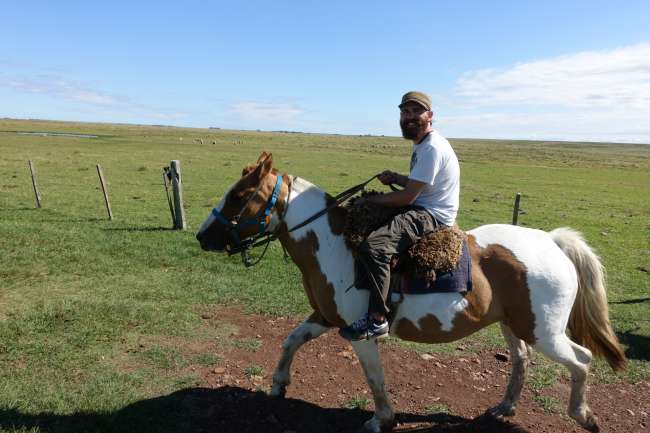
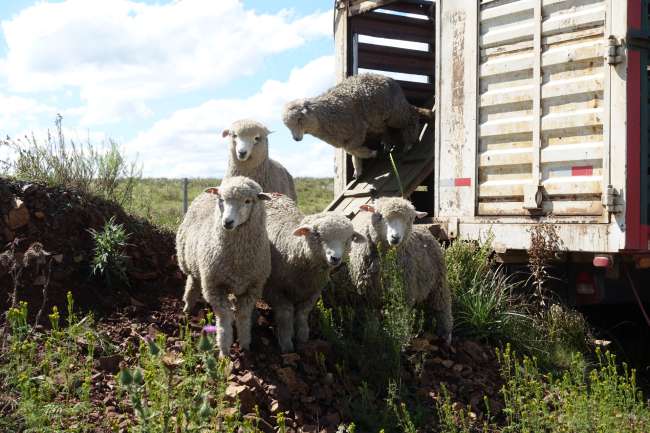
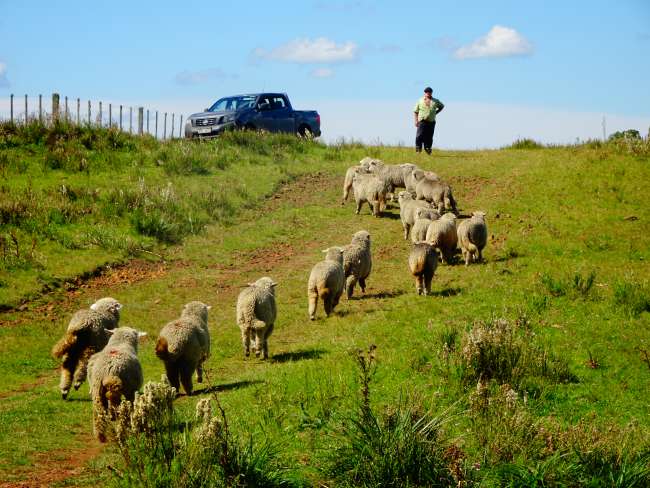
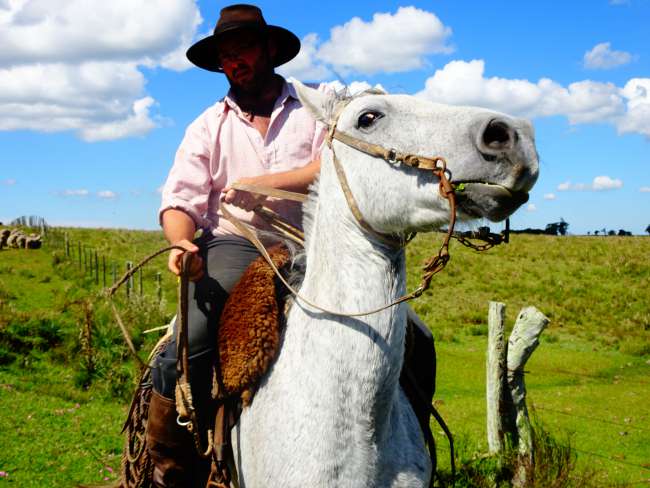
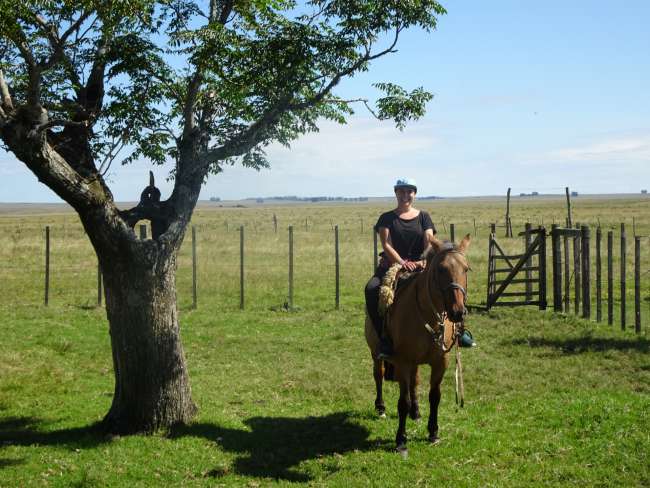
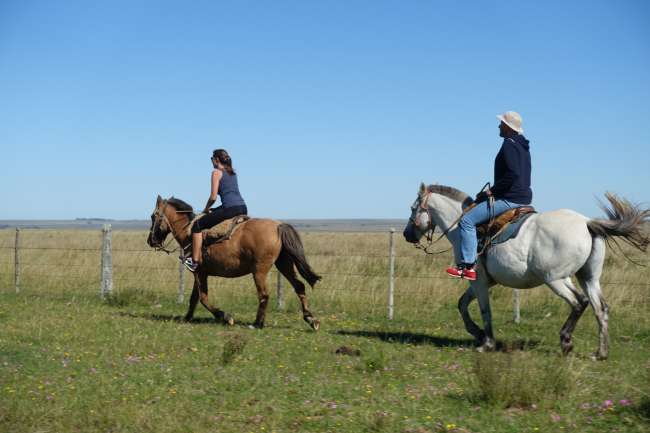
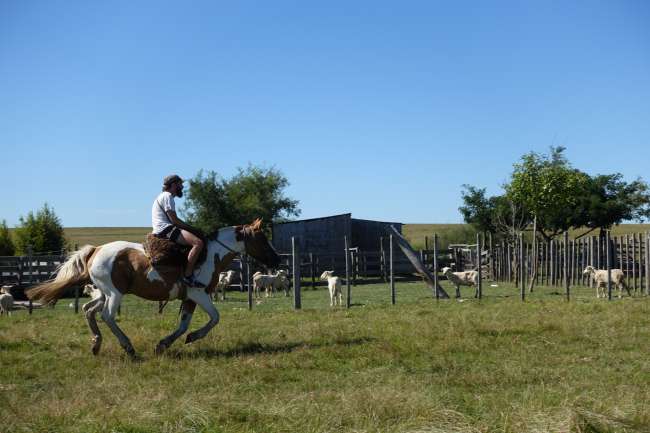
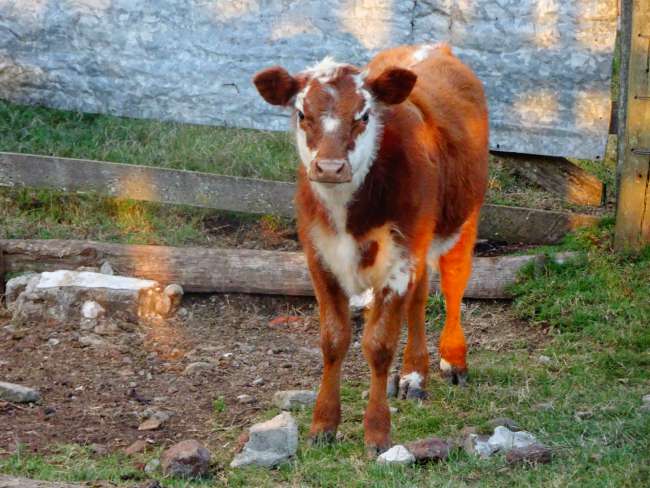
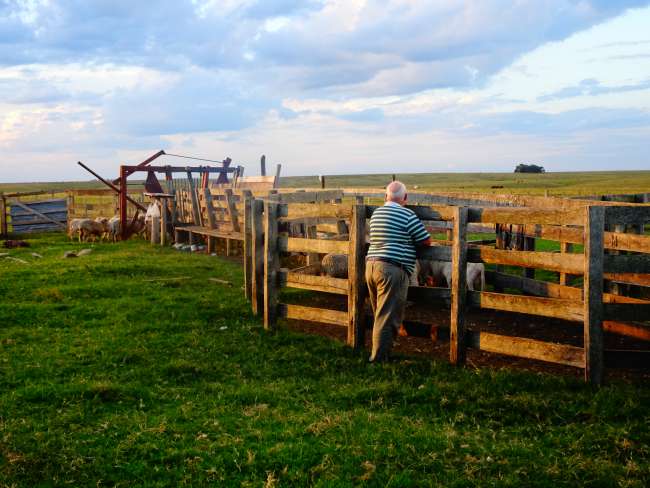
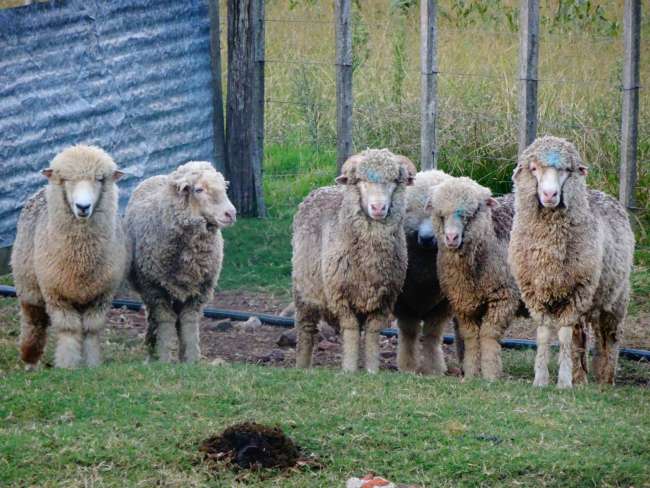

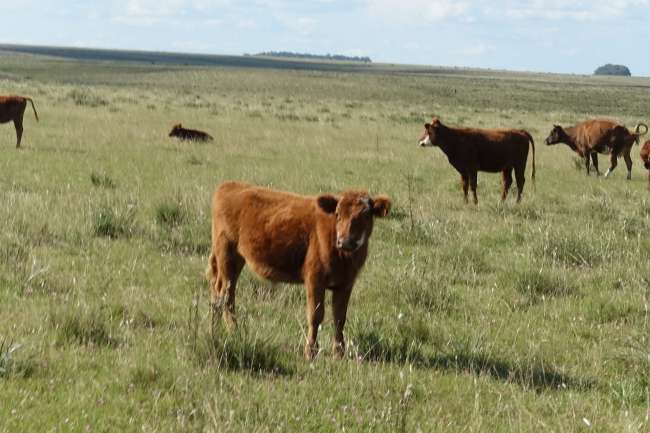
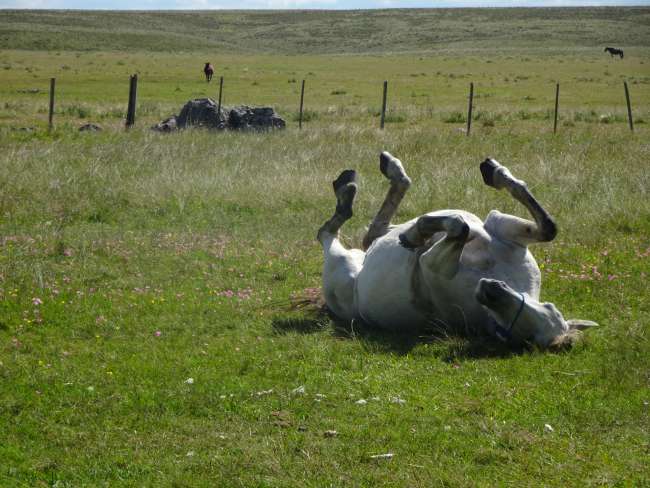
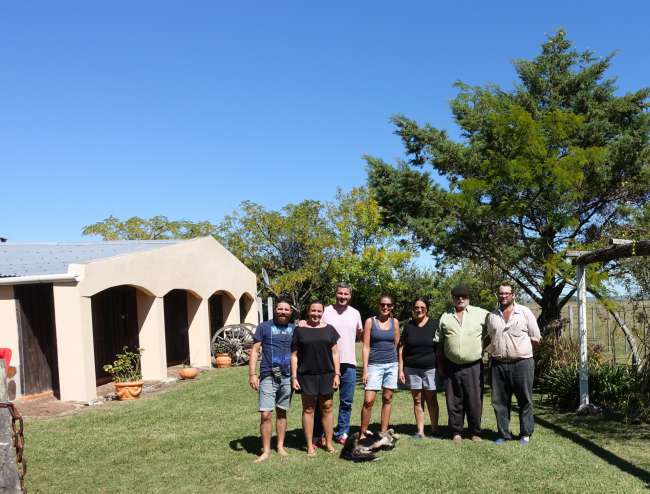
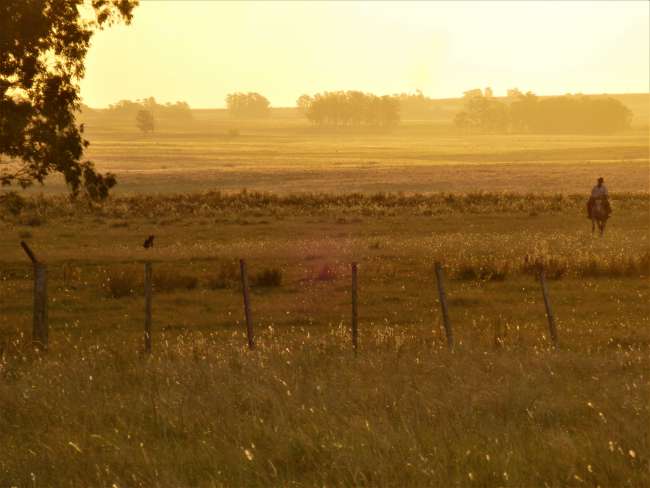
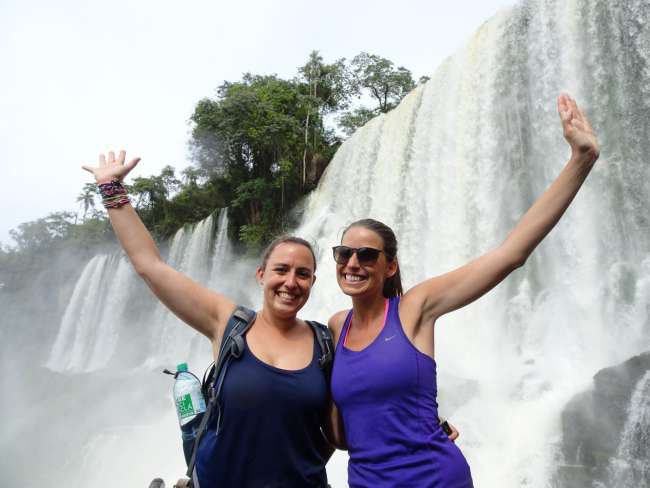
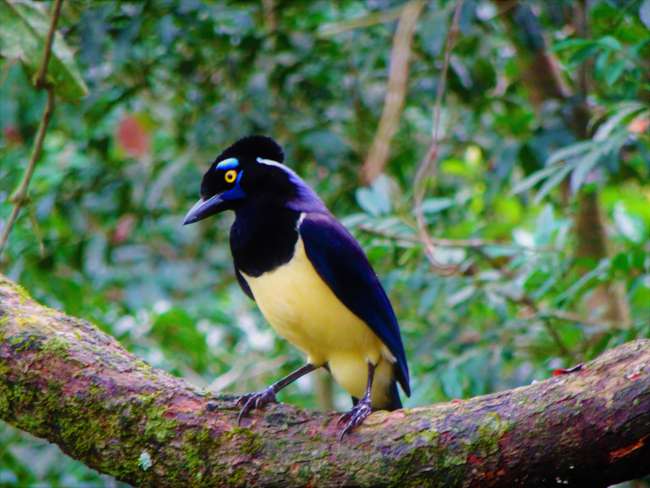
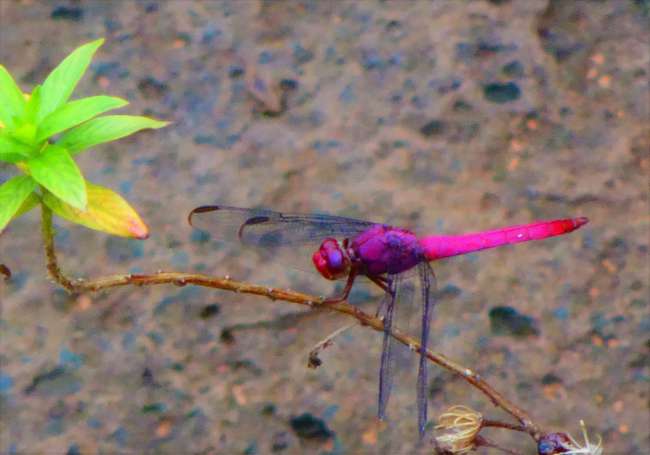
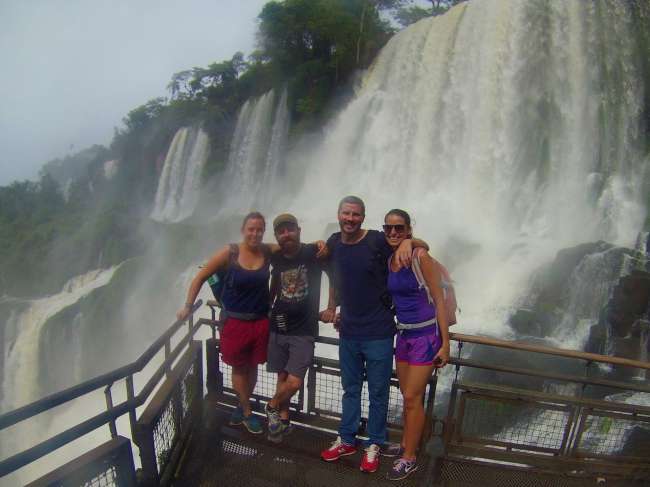
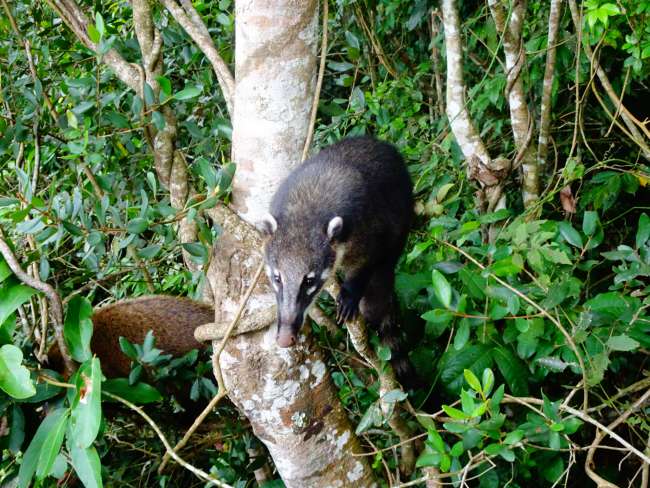
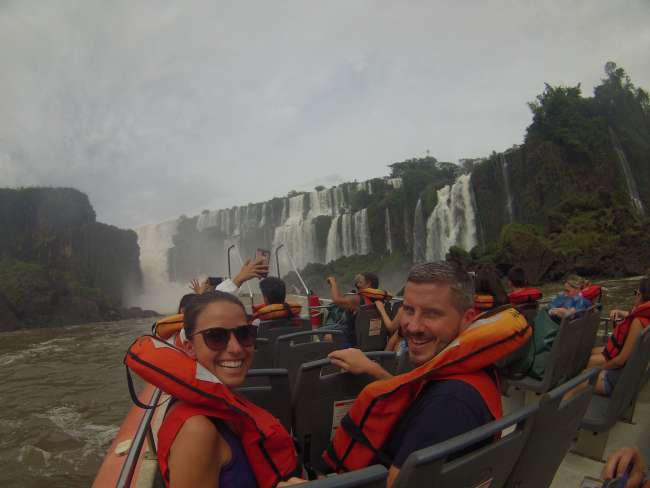

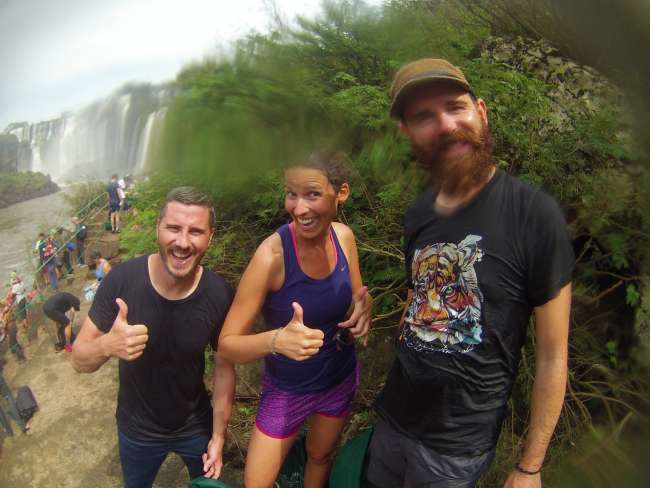
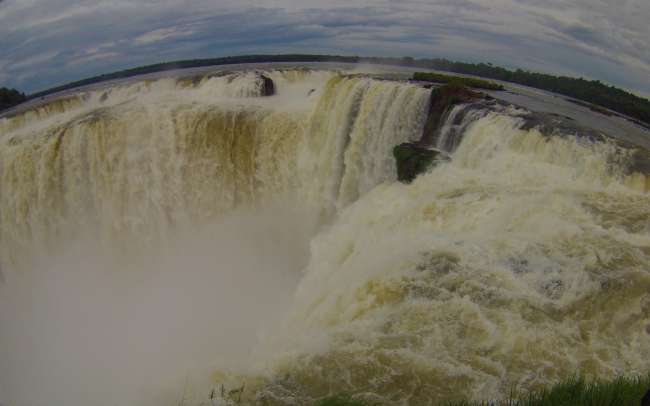
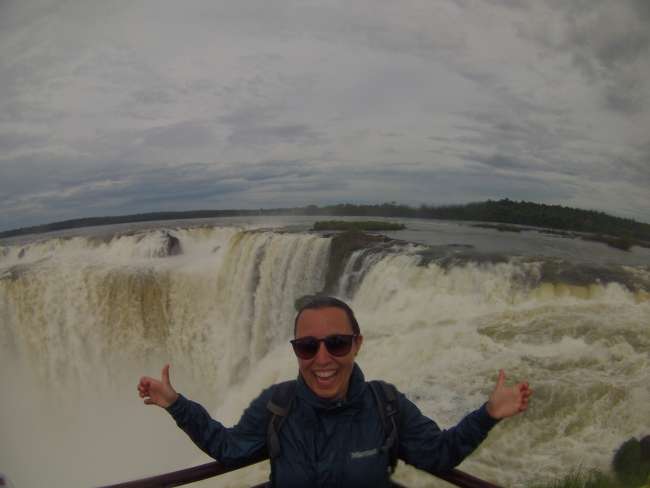
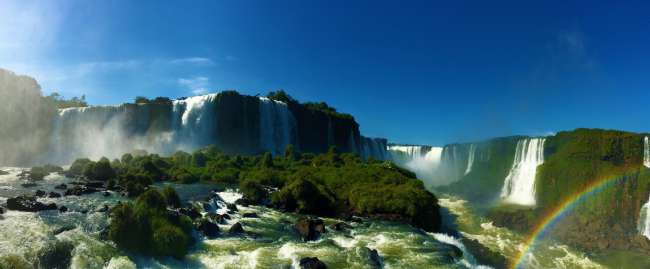
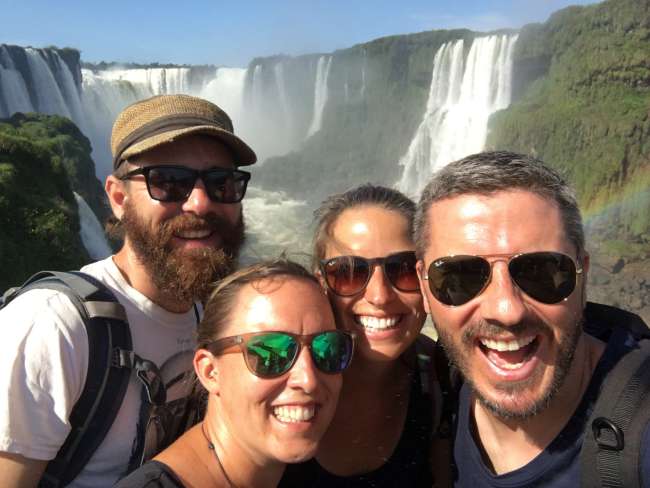
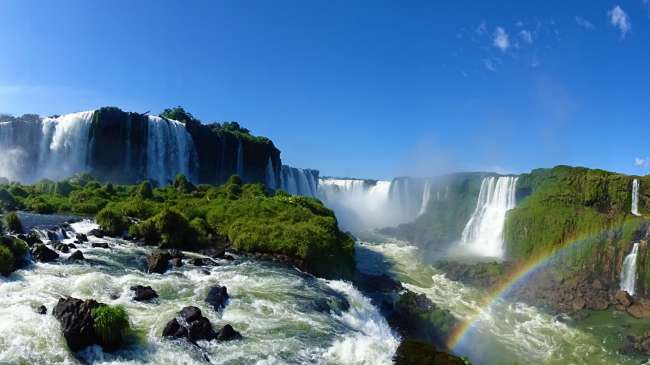
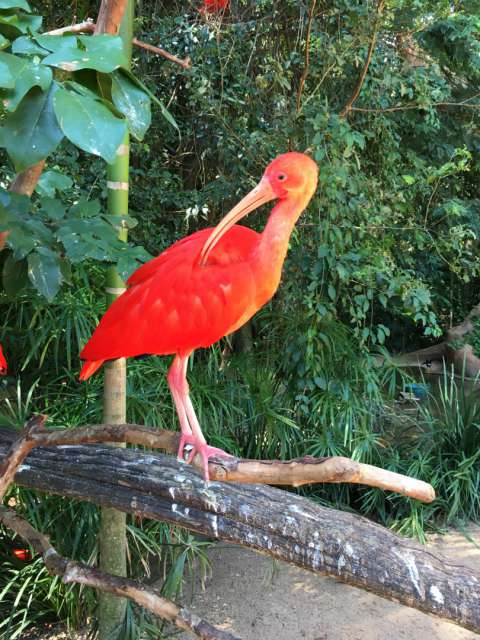
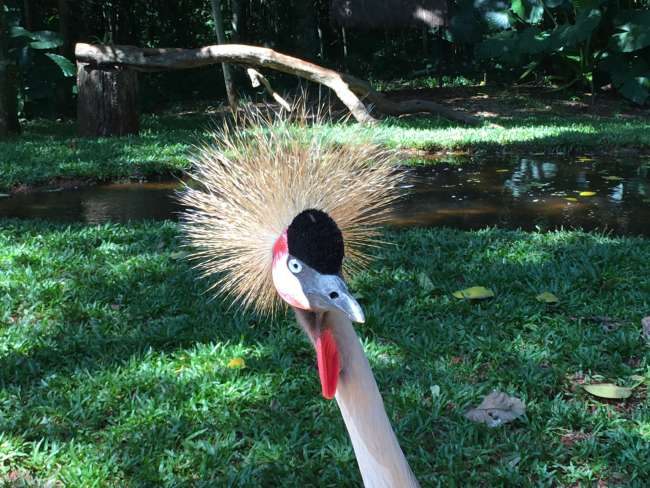
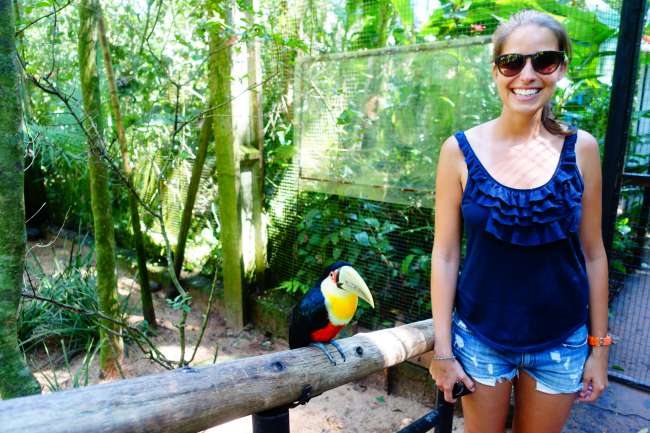
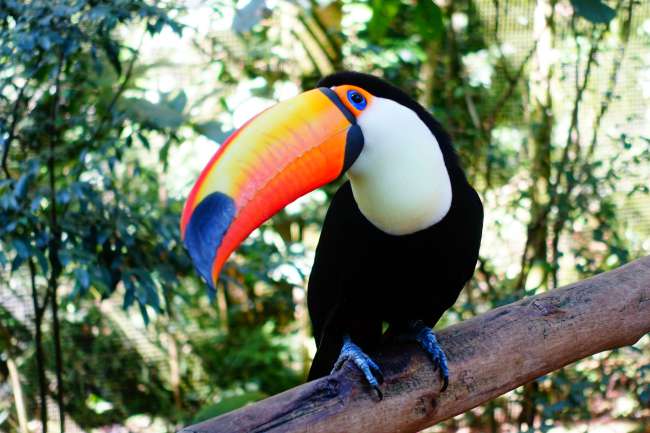
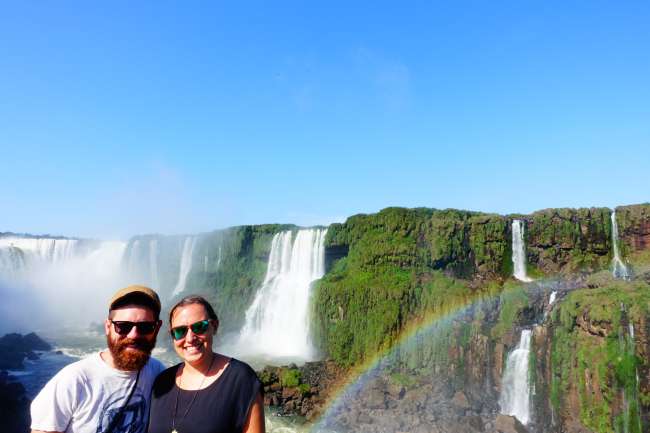
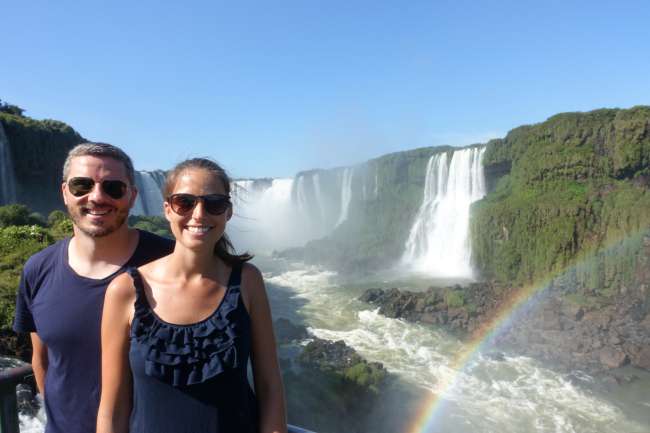
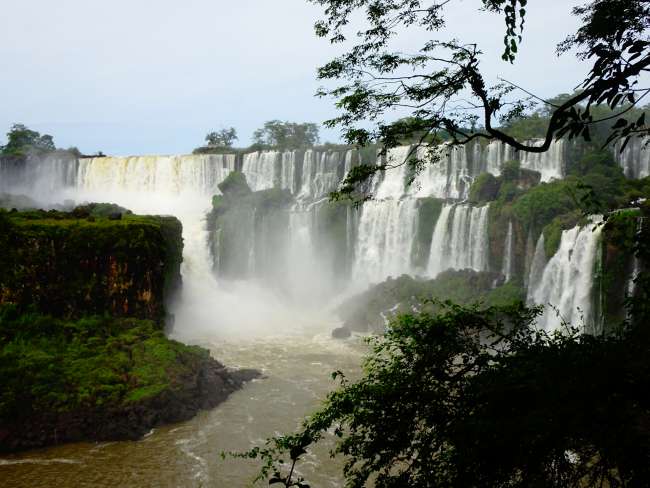
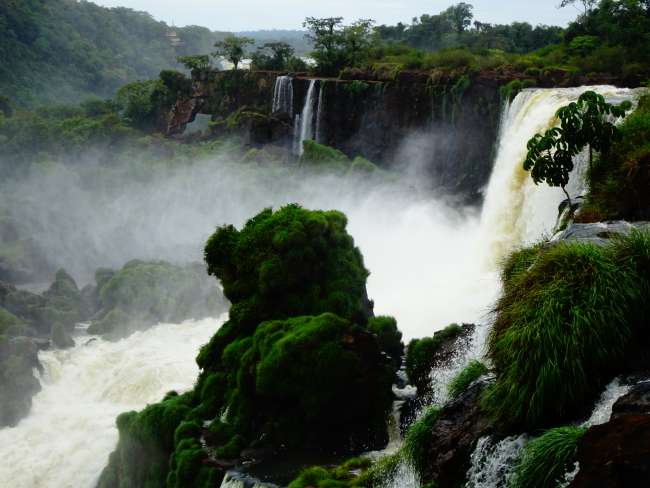
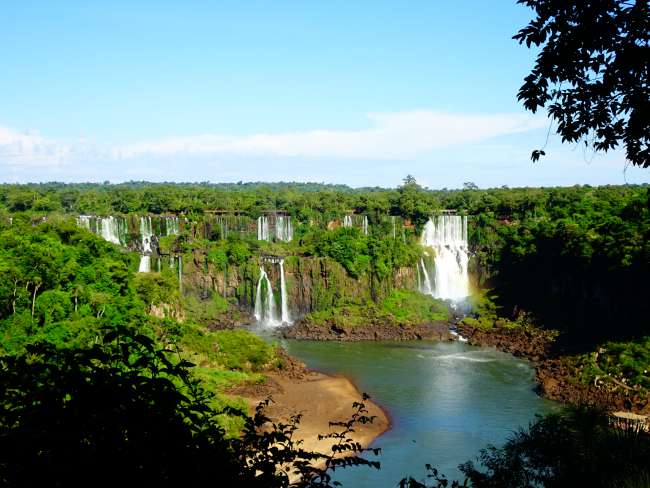
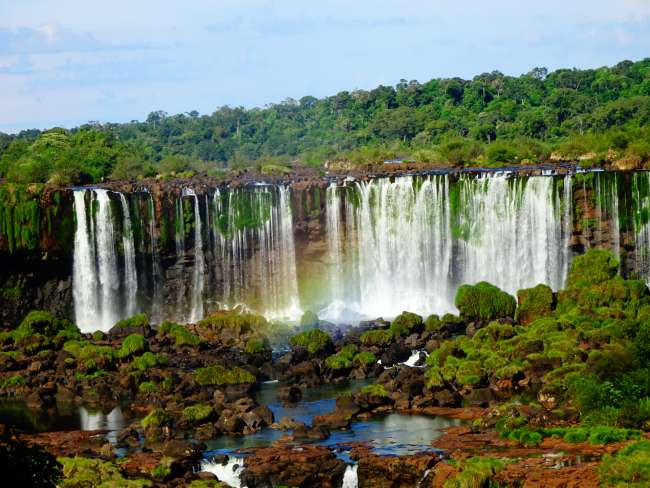
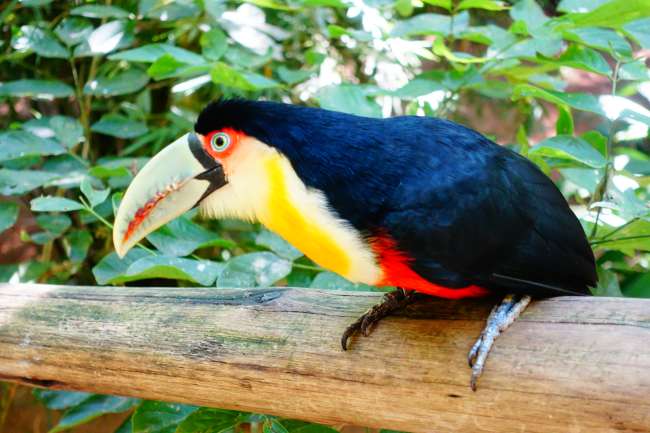
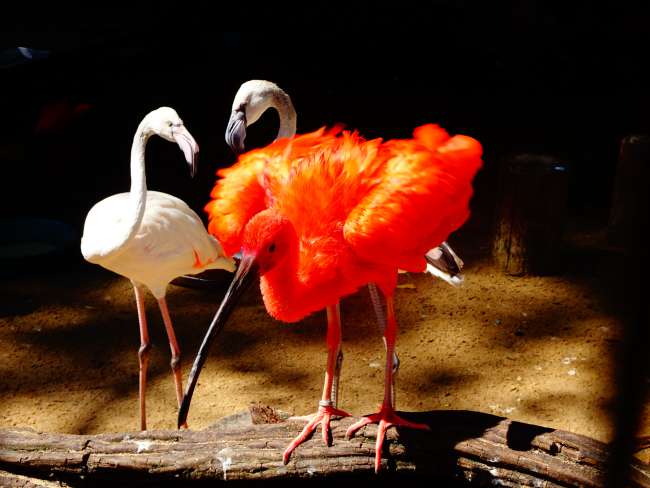
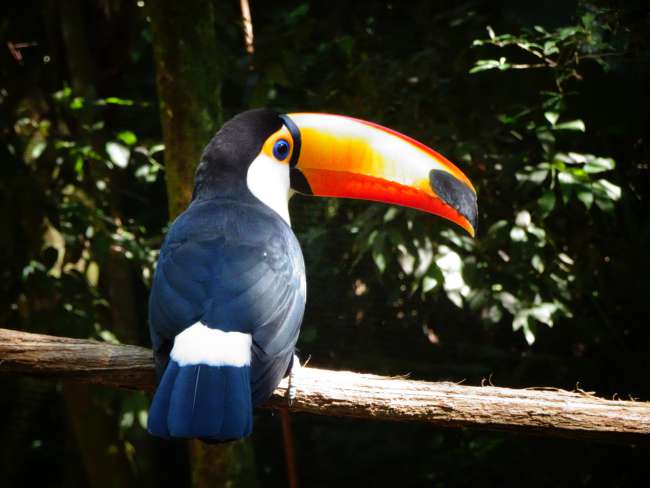
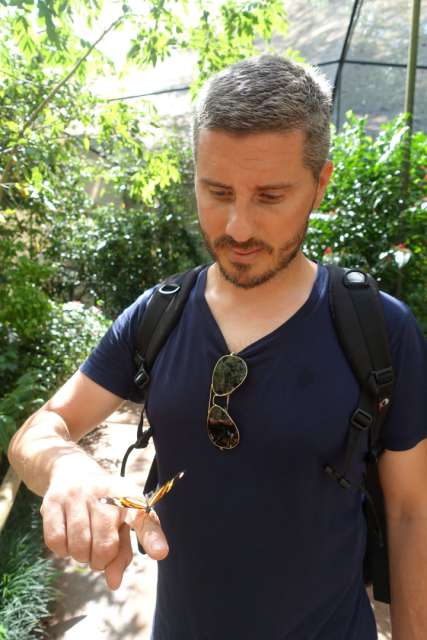
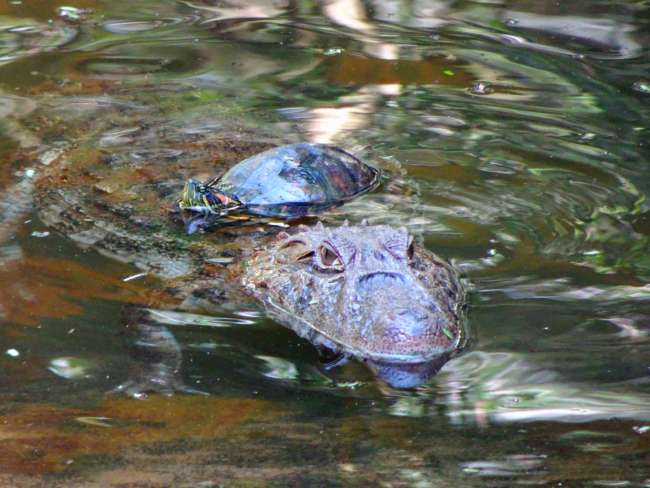
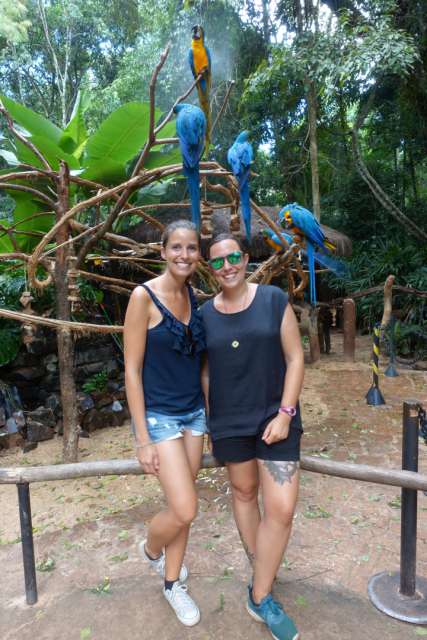
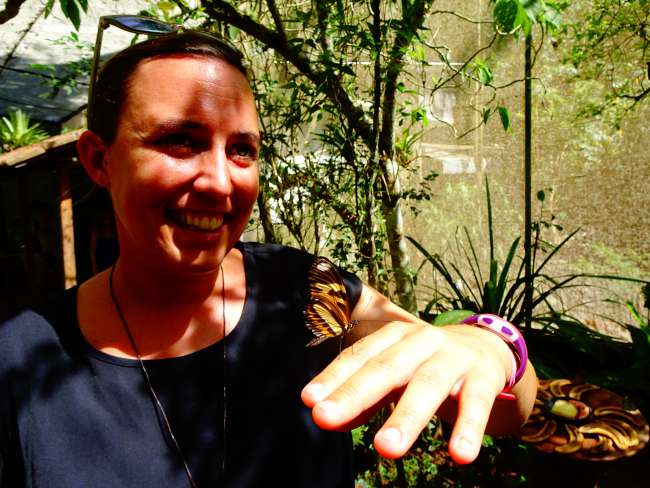
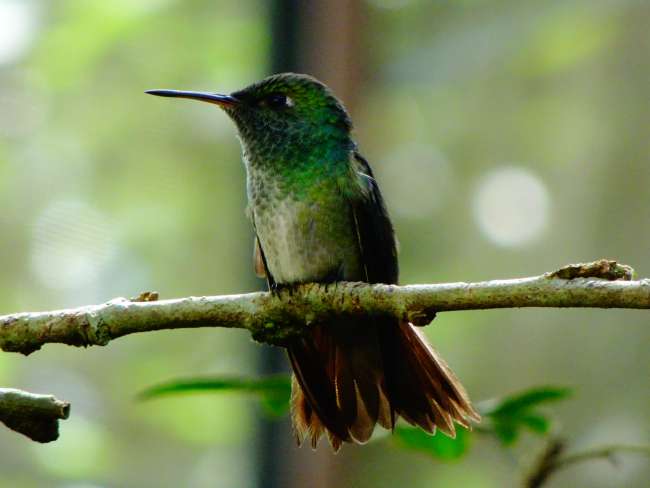
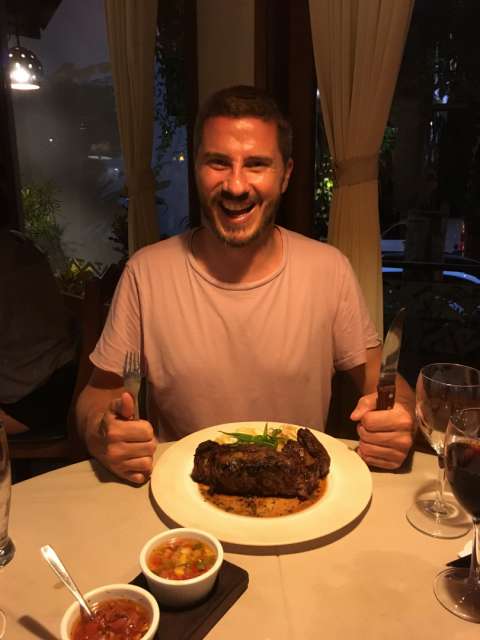
Suscríbete al boletín
From Buenos Aires, we took the ferry to Colonia in Uruguay. Since the Argentinians were celebrating some weird holiday, almost all ferries and buses were fully booked, so we could only start the crossing in the evening and didn't have time to visit the beautiful colonial town of Colonia. But in the middle of the night, we finally arrived at our lovely hotel in Montevideo's old town, where Steffi and Thilo were supposed to land the next morning. Unfortunately, it remained at "supposed to" because Steffi texted me during the night that her flight was delayed by a day and they would only land in Montevideo on Saturday evening. So we set off alone on an exploration tour of Uruguay's capital city. We visited the museum about the 1972 plane crash in the Chilean Andes, with a Uruguayan rugby team on board. The 16 survivors endured 72 days in freezing cold and became "well known" in our media mainly because they ate their deceased friends to survive. In this very interesting museum, whose initiator speaks fluent German and is friends with many of the survivors, the disaster is very well processed and the many original artifacts and photos make the tragic story very palpable.
After that, we joined another freewalking tour, whose guide made us laugh every second. He knew how to explain the craziness of Uruguay in a very ironic and funny way, here are the best facts:
- In Uruguay, only 3.3 million people live (half of them in Montevideo) ... but there are 13 million cattle.
- Uruguayan parents don't care about their child's sexual or political orientation (homosexuality has been legalized in Uruguay since 1934!!) BUT they don't want them to become vegetarians, that would break their hearts. Eating meat is a duty for Uruguayans because it helps their country, which relies largely on the meat industry.
- We were already used to the ubiquitous "mate drinking" from Paraguay and Argentina, but Uruguayans top it all. The thermos and guampa are EVERYWHERE, and to keep the water warm, there are even wristwatches with built-in flamethrowers! The guampas here are also twice as big, the bombillas twice as long, and the mate powder twice as strong as we knew it before.
- Uruguay is the most liberal country on the continent. Gender equality has been enshrined in the constitution since 1931, cannabis was fully legalized in 2013, and everyone is allowed to do whatever they want here. Uruguayans are very peaceful and no one is discriminated against, but ALL are welcome. For only 6 US dollars, you can buy Uruguayan citizenship and find happiness in this beautiful country, there is plenty of room 😊
- So that no one feels excluded because of their religion, almost all Christian holidays have been renamed. Christmas is now called "Family Festival" and Easter is called "Week of the Tourists". There are also the wildest holidays, mixed from various religions, e.g. there is a day when an African sea goddess is worshiped so that everyone can enjoy a day off at the beach.
- Every school child receives a free laptop and the family gets a free internet connection. Uruguay also has the highest literacy rate in the world!
- Anyone who wants a selfie with the president can do so daily around 4:30 pm, as Mr. President has to walk from his government seat (which looks absolutely unspectacular) to his car 3 blocks away, as there is no underground parking. It is not dangerous because who knows the president of Uruguay ?!
Then Steffi and Thilo finally arrived in the evening, so we went out for a delicious dinner and toasted to our vacation together! The two of them had brought our "rental car" from the airport, a really old box that was barely in one piece, and so our road trip along the coast could begin.
The first stop was Punta del Este, the posh hipster party celebrity place where not only Shakira regularly shakes her hips. This artificial city is nothing like the rest of Uruguay, but we had rented a converted container from a very nice young family just outside the city and made a nice trip to Punta Ballenas to visit the museum of the famous painter Carlos Páez Vilaró, and of course enjoyed the evenings together with cooking, beer and playing Wizard!
Our next accommodation caused Steffi a lot of concern. She found "The Bottle House" on Airbnb, which Thilo and I immediately liked and booked against Steffi's will, which was absolutely the right decision!! The communication beforehand drove poor Steffi almost crazy, because the owner only gave the address as "turn right at kilometer xy and ask for the key at the restaurant in the forest". Of course, for Steffi, this was not an adequate address, so she bombarded the poor landlord with dozens of text messages and panicked that we would never find the house.
The drive to the Bottle House was more or less smooth, typically Uruguayan! Initially, Thilo maneuvered us into a sandy beach path due to lack of Spanish knowledge, but at the end of it, we discovered a beautiful abandoned lagoon. And when we finally reached the correct route and saw a gravel road turn right at kilometer stone xy, we were very confident, but Steffi remained skeptical because a gate abruptly ended our drive and there was no Bottle House in sight. Steffi got furious and wanted to shout at the poor landlord on the phone when Tömmi and I discovered a faded remnant of a sign at the gate, which read that you should close the gate because of the sheep. So we opened the gate and set off on foot to search for the Bottle House since we didn't find a forest or a restaurant to get the key. Although we didn't find it right away, a nice hippie who was building a "house" out of old church windows knew immediately what we were looking for and helped us. With all the necessary information, we trudged back to Steffi and Thilo, I grabbed Steffi and after a short walk through a hemp plantation (presumably supposed to be the "forest"), we arrived at said restaurant, which consisted of 3 hippies with dogs and a hot plate 😊 There we were told that there was no key, but they could show us the way to the house. Accompanied by 5 dogs, we followed the baggy pants señorita on her motocross bike over dunes and through herds of cows, always heading towards the sea, until we finally stood in front of the Bottle House. Steffi was almost on the verge of a nervous breakdown, but when she saw our cool hippie hut, her heart started to skip a beat. The Bottle House gets its name from the glass bottles used in the masonry. There is electricity from a solar panel and water is pumped into a canister and then into the house with an electric pump. The gas stove, grill, and hammock with a sea view looked tip-top, and there were 4 beds, what more could we want. The nearest neighbors were miles away, so it was just us, the house, the beach, lots of wind, and the sea! In addition, our stay was sweetened by a lovely shepherd mix dog that we immediately fell in love with.
In the Bottle House, the daily routine consisted mainly of beach walks with the dog, playing fetch, or rather attempting to teach it to fetch, trips to the nearest village to buy supplies for the evening barbecue, and drinking lots of beer and Aristócatra. By the way, in Uruguay, grilling is exclusively done with real wood, they don't know things like charcoal here! We had delicious steaks with lots of vegetables and the tastiest corn on the cob in the world, Steffi's exact words: "I love the cob!"
A trip to Cabo Polonio was still on the agenda, so we hopped on an old truck and bumped along the sandy dunes into Uruguay's most famous hippie village. You can only get to Cabo Polonio with these old trucks because the village is located in the middle of a nature reserve. There are 95 inhabitants who rely mainly on solar and wind energy and make a living from fishing or from tourists who flock here especially during the peak season. In summer, you can watch the passing whales and dolphins here, but since we were there at the wrong time of year, we had to settle for the sea lion colony.
It was very difficult for us to say goodbye to the Bottle House, but we wanted to celebrate Steffi's birthday in Punta del Diablo with a bit more civilization.
Punta del Diablo is very close to the Brazilian border, which gave us the best beach Caipirinhas ever. We didn't do much more than lounging on the beach with cocktails and splashing in the wild waves of the sea. The beaches there are endless, and thanks to the low season, there were hardly any people there, apart from a few surfers and dogs. We quickly found out which little shop had the best groceries, and so we enjoyed delicious barbecues, seafood feasts, and toasted to Steffi's birthday. Since we had introduced Steffi to the art of mate drinking since her arrival and made her a bit addicted due to the lack of coffee, she was very happy with the pink unicorn mate complete equipment for her birthday.
After our hair was tangled from the wind and saltwater and our car had plenty of sand in the transmission, we returned to Montevideo with a stopover at a small sea animal rescue station. In the capital, we had booked a fancy hotel right next to the bus station, from where we headed to Tacuarembó the next morning, the city of the gauchos. That's where we wanted to go, to a very authentic gaucho farm in the middle of the Pampas, but of course, not before we had fully charged all our batteries and devices, as there would be little electricity on the gaucho ranch.
Pedro, our round and lovely guest dad, was at the bus station, where we once again felt like in a zoo, as we clearly stood out as gringos and were hard to miss since he was wearing typical gaucho attire with "bombacha", a dirty pair of trousers with a wide belt, an open shirt over his silver chest hair mane, and of course the slanting beret called "boina". We got into the 4x4 "camioneta" and off we went into the Pampas. 50 minutes later, we finally arrived at "Yvytu Itaty", which translates from Guaraní as "Wind and Stones". On the way, Pedro explained and showed us a lot about his lands, which extended farther than our eyes could see. The numbers he mentioned regarding land ownership as well as cattle, sheep, horses, donkeys, etc. were so large that I couldn't remember them! We got a small idea of the size of this estancia in the following days when we only rode a small fraction of it, but more on that later.
We were welcomed by our lovely host mom Nahir, a soul of a person, with freshly baked cake, homemade dulce de leche cream (the finest caramel cream and national dish in Uruguay), and fresh milk cocoa before we settled into our cozy four-bed room. Then the peculiarities of the solar and wind power supply were explained, as well as the hot water supply through a wood stove, which is also used exclusively for cooking.
We immediately felt very comfortable, got acquainted with Tobby, the still very young and playful herding dog, as well as a very sweet donkey who took a little walk with us.
During the delicious dinner, we also met son Mathi, who now manages the farm but still works for a cattle breeding company in Tacuarembó, where his family also lives. Nahir told us that she also had to live apart from Pedro for a long time so that the children could go to school because it takes at least an hour's drive from the farm to the nearest school, which is not feasible in the long run. During dinner, we immediately noticed why both Pedro and son Mathi were so well fed, Nahir is a fantastic cook!!
The next morning, we went to the gaucho school, where milking cows and horseback riding were on the curriculum, my worst nightmare! Only Tömmi received the gaucho diploma in cow milking, the others remained at the gringo level, even though Pedro bribed the cow with food to endure our inexperienced fingers. Then the horses were saddled and assigned: the hot-blooded pony lady Manscha was intended for Tömmi; Steffi got a particularly stubborn specimen that she didn't quite get along with, which is why she also forgot its name; Thilo got to ride the large gray horse Bonbon and I was very lucky because the good-natured Susanna even managed to make me, someone who is not a fan of horses, have a little fun riding. After we were explained how to "steer" and "accelerate," off we went, over hills, through herds of cattle, through dried-up river beds, and an endless grassland. The first ride was very leisurely, as Steffi's stubborn little horse had to be towed along with Steffi several times because it simply refused to go any further. But Mathi and Tobby always had everything under control and were very patient with us. However, Tömmi was once again ahead, as he and his Manscha zoomed past us every time, or rather Manscha zoomed past and Tömmi had to figure out how to hold on to his pony somehow. With so much galloping, Tömmi's saddle always came loose and had to be tightened several times, giving Tömmi a little break. But the rest of us almost fell off our horses from laughing when Tömmi, like a sack of wet clothes, zoomed past us, but he wanted to convince us that he had the body tension of a Ludger Beerbaum!
Comment from Tömmi: At this point, I must insist because I am entirely unfamiliar with a Ludger Beerbaum, and my buddy Manscha listened excellently to me. Moreover, my actual words were: "I have the body tension of death," not only because I was zooming through the prairie at what felt like 50 mph and from time to time felt a tinge of mortal fear when I could barely hold myself in the saddle. Excuse me for not sitting bolt upright on my little pony at such high speeds because I didn't want to hinder my roller coaster ride with unnecessary air resistance. However, I must admit that I not only had the body tension but also the muscle soreness of death because on a sport horse like Manscha, not only the horse gets holistic exercise but also the inexperienced rider. In any case, Mathi and Pedro awarded me the second diploma independently of each other, making me a true gaucho. Who knows, maybe I'll have a second career. At least I'm eager to ride horses more often.
We then "helped" Mathi and Pedro to drive the sheep, or rather we tried to help, but we rather admired Mathi's riding skills and how he had control over the animals with various sounds and whistles.
On the last day, everything went much smoother, although Tömmi complained about whole body pain, and Steffi's horse really didn't want to walk anymore. So we rode to Pedro's uncle's estancia, Pedro followed us with the car to provide us with water and handed me a bamboo stick halfway through which I just had to gently place on Susanna to activate her turbo drive. Thilo had also mastered the technique by now and galloped very gallantly towards the sun on Bonbon. Tömmi was also shaken vigorously again, only poor Steffi stood more than moved forward with her horse. So we made a swap, I got in the car with Pedro to take photos and videos, and Steffi got to race home on Susanna. Everyone was happy about the wonderful time in our great host family, who really took care of us around the clock. Therefore, saying goodbye was also difficult, but we had to continue towards Salto to then travel to the Iguazu Falls from there.
We spent the short night in Salto, the border town to Argentina, in a nice cabin with its own thermal pools, which was very good for our sore limbs from riding. Unfortunately, Thilo, Tömmi, and Steffi decided to have a Chivito with not-so-fresh meat and/or spoiled mayonnaise for dinner and were attacked by Montezuma's revenge the next day. If we had had a roof over our heads or rather a toilet in close vicinity that day, it wouldn't have been so bad. But that particular day was our only travel day, which we spent at the train station in Salto, on the bus to Concordia, at the train station in the ugly Concordia, and 12 hours on the bus to Iguazu. The border crossing went 'almost' smoothly this time, if it hadn't been for the dog treats that Steffi and I had bought for the cute beach dogs. I had stored the package of dog food in the outer net of my backpack to get to it quickly, but unfortunately, the only dog we encountered that day was the drug-sniffing dog! You can probably already guess what happened: the black drug-sniffing snout jumped into the luggage compartment of the bus to do its job, pounced on my backpack like a wild animal, barked and howled, upon which the customs officers put 1 and 1 together and asked me to go to a separate room with my luggage. They tried to scan the backpack there, but the machine just wouldn't start. So they inspected me and I seized the opportunity to explain in the best Spanish that I was only trying to smuggle dog food. The customs officers briefly glanced at each other, discovered the evil pack of dog treats, and burst into laughter. The whimpering dog's belly was patted, and the bus driver was called to start the engine, the 'chica' only had 'comida por el perro' in her luggage. The entire bus company also nearly fell over laughing, and off we went to the Argentine border town of Concordia :-)
The 3 sick people were just hanging around the train station like a wet noodle, and I felt very sorry for them. And then when the overnight bus to Iguazu was over 2 hours late and during the very slow waiting time, a sandwich vendor tried to sell us his "sanduchees" (Thilo always understood "Tango-Cheese" and almost went crazy), which is the last thing you want to see with a queasy stomach, everyone was deflated. Finally, in the overnight bus, at least I had a highlight, because the 3 sick stomachs passed on the delicious chocolate mousse and tart offered to us by the bus attendant, which meant there was more for me 😉
12 hours later, we were in tropical Iguazu and checked into a great and huge cabin. After a long nap and restocking on groceries, as everyone was feeling more or less okay again, we visited a center for injured or mistreated jungle animals. It was nice to hear that many of the animals can be released back into the wild. Since the four of us were cheaper to travel with a taxi than with public transportation here, we immediately got to know our driver Viktor and stayed loyal to him for the next few days when we wanted to admire the famous waterfalls from the Argentine and Brazilian sides.
First, we visited the Argentine side, where you have the opportunity to get very close to some of the over 270 waterfalls. But being close was not close enough for us, so we booked a speedboat tour directly into the waterfalls. First, you approach the cascading waters from several viewpoints, where you can already catch beautiful views of this natural wonder. It got really cool on the speedboat when we raced through some of the waterfalls at full speed four times and got soaking wet to the underwear. It was impressive with what force the water hit our faces, and it once again made us realize how small and fragile humans are.
With a smile on our faces, we took a break to change clothes when we returned to the mainland, that is Steffi and I, as the gentlemen hadn't listened properly in the morning and didn't pack any spare clothes. Tömmi moaned into a hole, which I fortunately didn't hear because of the roaring water, Thilo took it more sportingly, albeit 10 kilos heavier because his long jeans had soaked up a lot of water. When we started drying off, the next surprise awaited us, which I had been waiting for for 8 months: coatis!!! Here called coatís, the cute little bears were wandering among the tourists in search of food, tissues, or even fancy underwear, as Steffi suddenly felt when one cheeky specimen tried to snatch her bag with the fresh underwear 😊 The noses of these animals are not part of their name for no reason because they can smell from a distance if there are delicacies in a backpack. So it didn't take long for 4 coatís to attack my backpack to get to my snacks. I could have watched these adorable creatures for hours and already made plans on how to take one home with me in the best possible way.
On the Argentine side of the waterfalls, a slow train takes you to various viewpoints, and so we set off like Jim Button to the Devil's Throat, the "Garganta del Diabolo," a U-shaped system of waterfalls in a 700-meter long and 150-meter wide gorge. Here, over 7,000 cubic meters of water per second plummet 82 meters down, breathtaking!!
The Guarani myth explains the natural spectacle as the work of the jealous God Mboi, who demanded a virgin every year in the form of a gigantic snake. However, one chosen girl managed to flee downstream with her lover, after which Mboi struck a huge gorge in the river bed. The soul of the girl remained trapped as a rock at the foot of the waterfall, her lover turned into a tree on the riverbank, from where he kept an eye on this rock forever.
Unfortunately, illegal deforestation is increasingly damaging the national park because the lack of trees leads to more soil erosion, and more rainforest soil is washed away, which also explains the brownish color of the water.
We were already very enthusiastic about the Argentine side and weren't quite sure if it was worth visiting the Brazilian side as well. But we had heard about a great bird park there, and since the entrance fee in Brazil was much cheaper, we decided to go for it. It was the absolutely right decision! Only on the Brazilian side do you really become aware of the extent of this natural wonder. You are rewarded with beautiful panoramic views and numerous rainbows, incredibly beautiful!
After an extensive photo shoot, we went into the bird park, where numerous tropical birds make their home in very spacious aviaries. Here, Tömmi once again practiced the art of bird photography, and we enjoyed the sight of the beautiful birds that looked almost painted. Especially the toucans caught our attention, with their beautiful marbling that looked so beautifully unreal that you could almost forget that they were living animals, if they hadn't pecked every now and then.
On our last evening together, we went out to dinner again. With good wine, we treated ourselves to the best that Argentine cuisine has to offer, Thilo floated in heaven with a 600 gram veal steak, and the rest of us enjoyed a delicious 3-course menu. What a perfect ending to our wonderful journey together!
Steffi and Thilo are now exploring Buenos Aires for a few more days, Tömmi and I are heading back to Paraguay once more before we say "Adios" to South America and fly to Central America.
Suscríbete al boletín
Respuesta
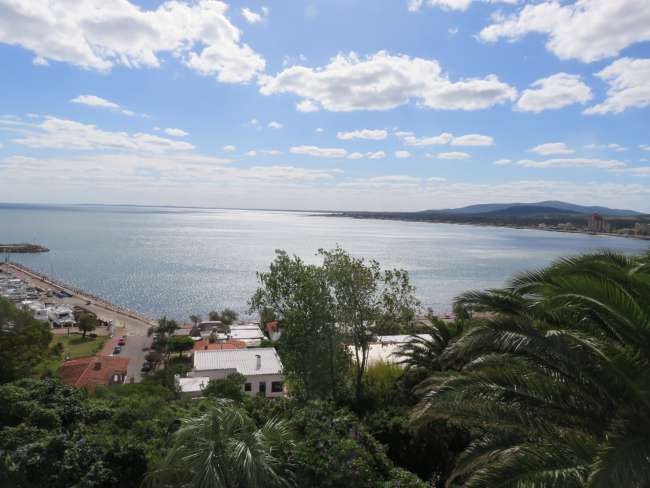
Informes de viaje Uruguay
